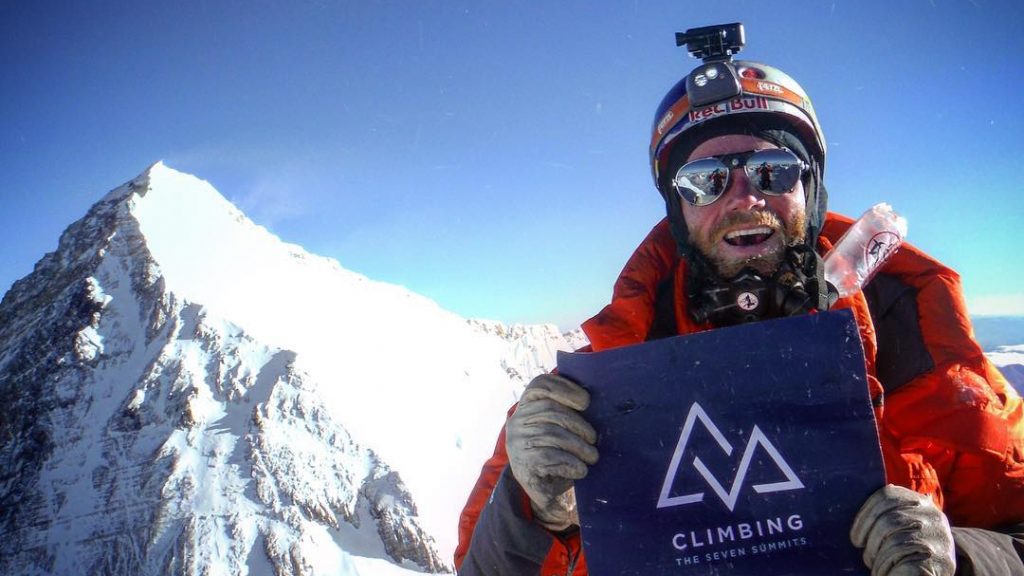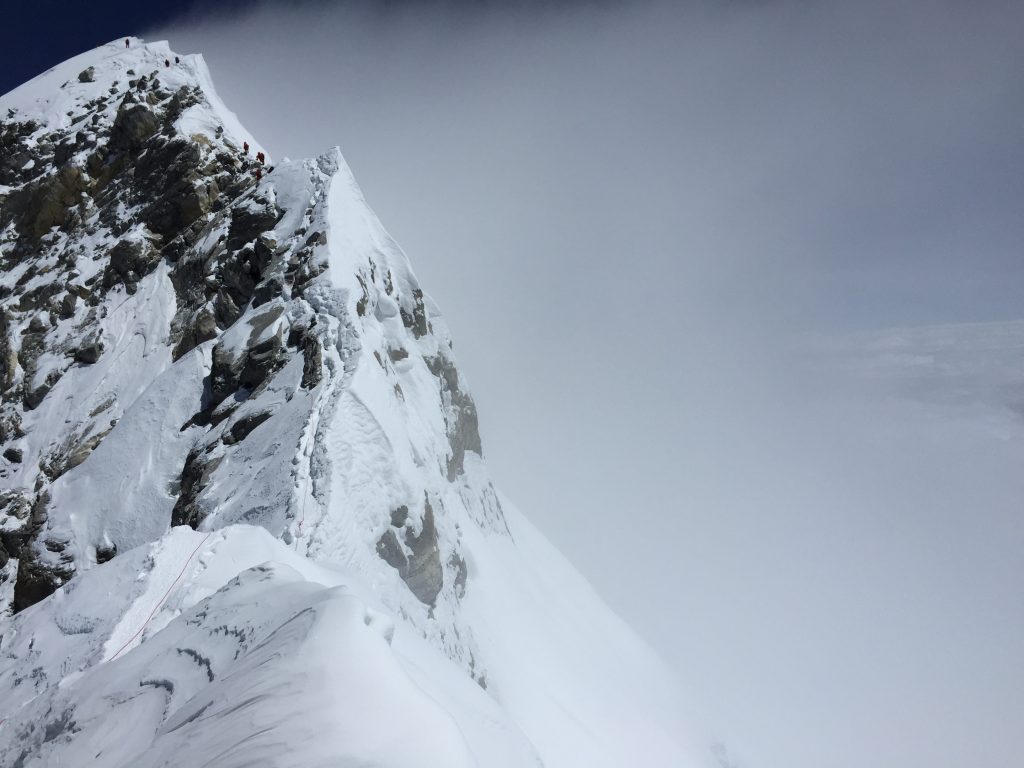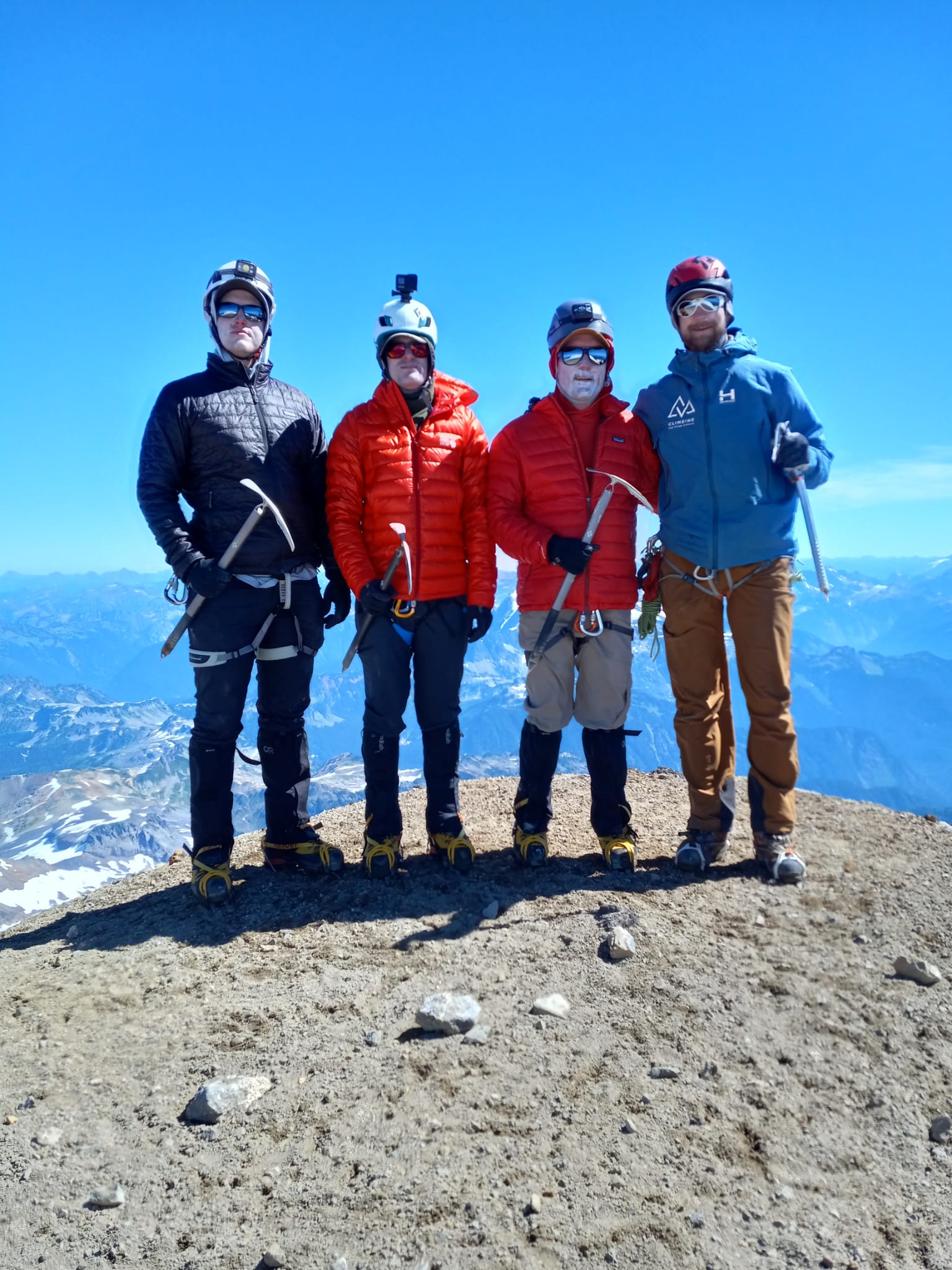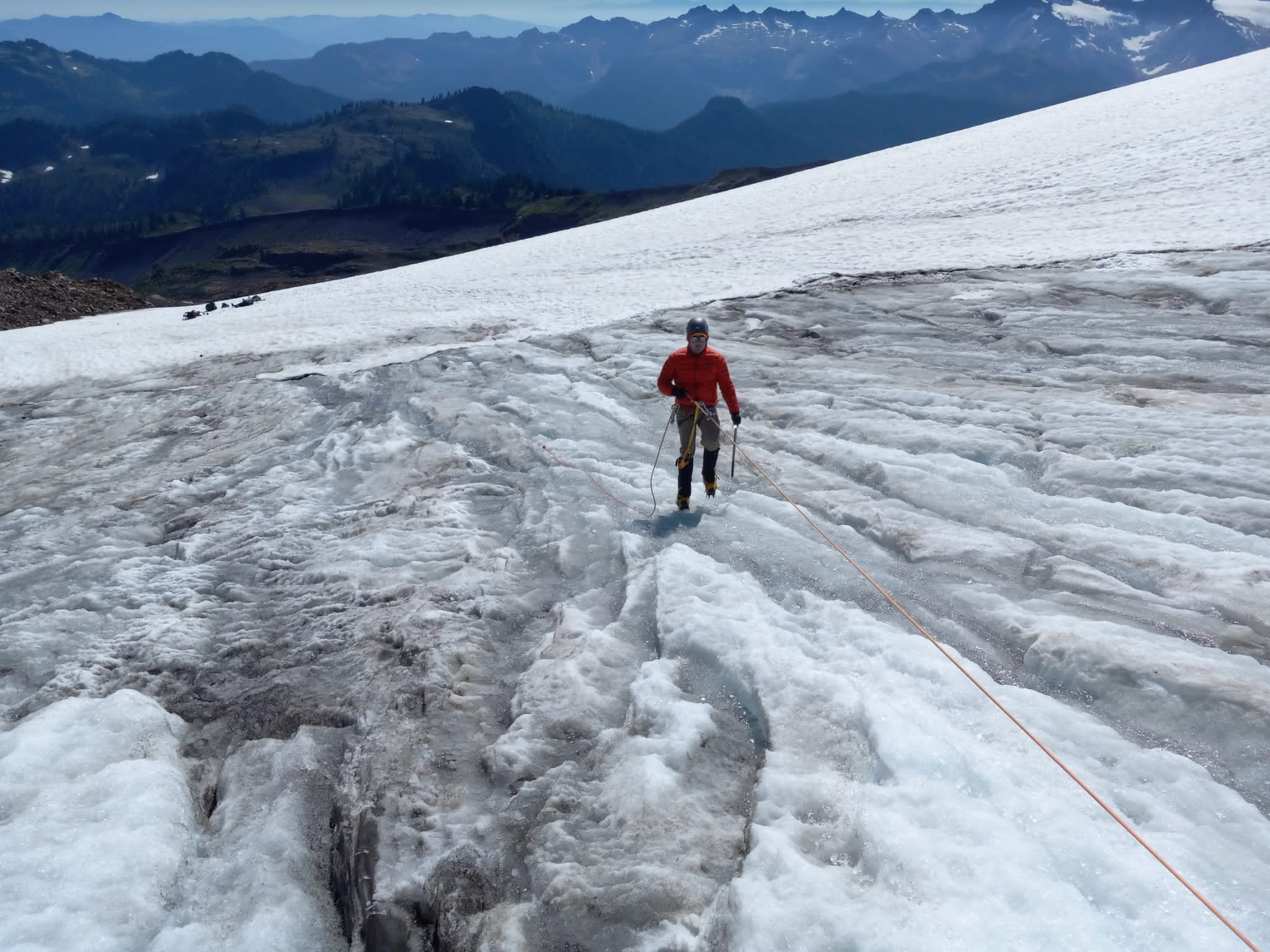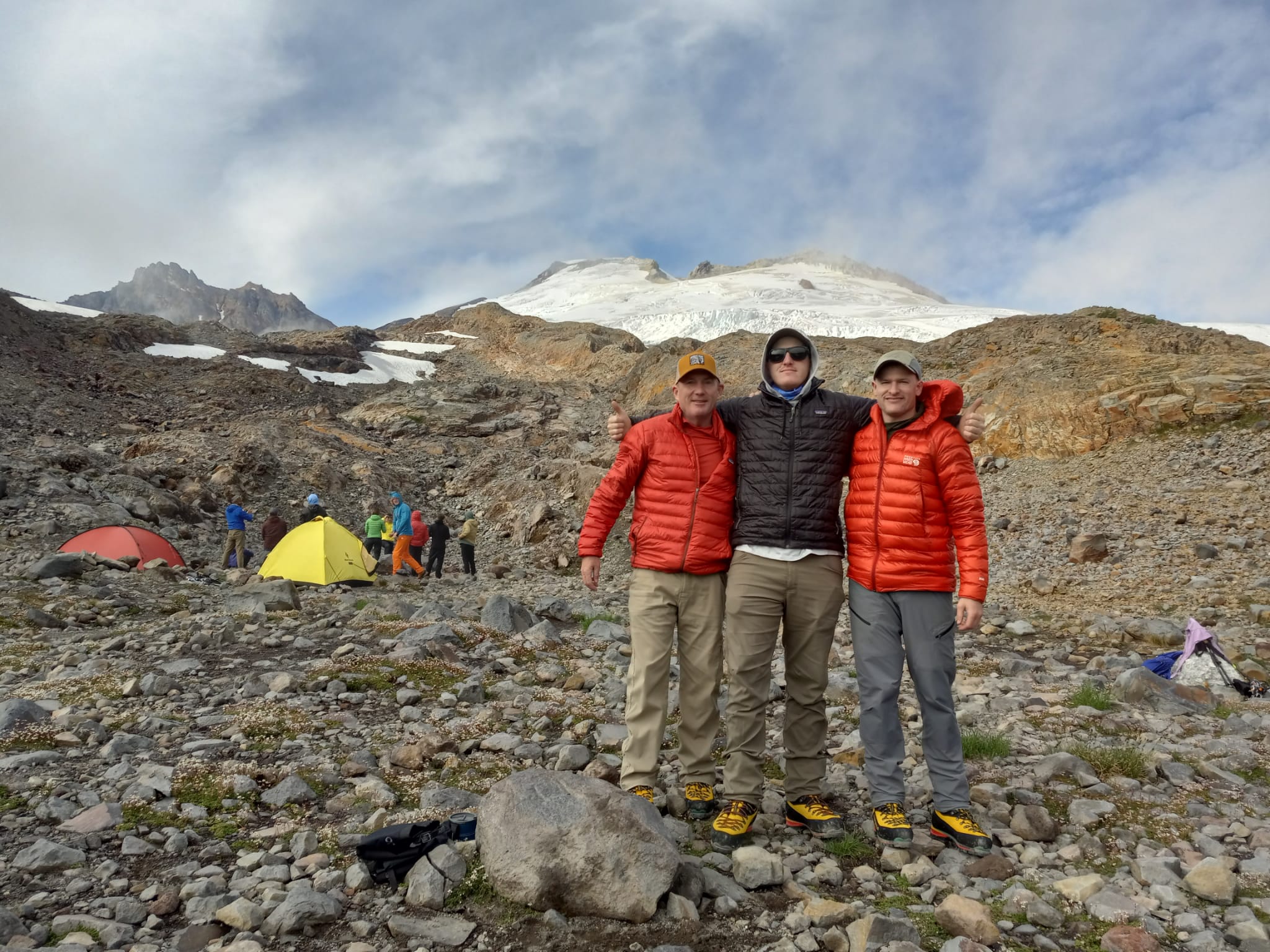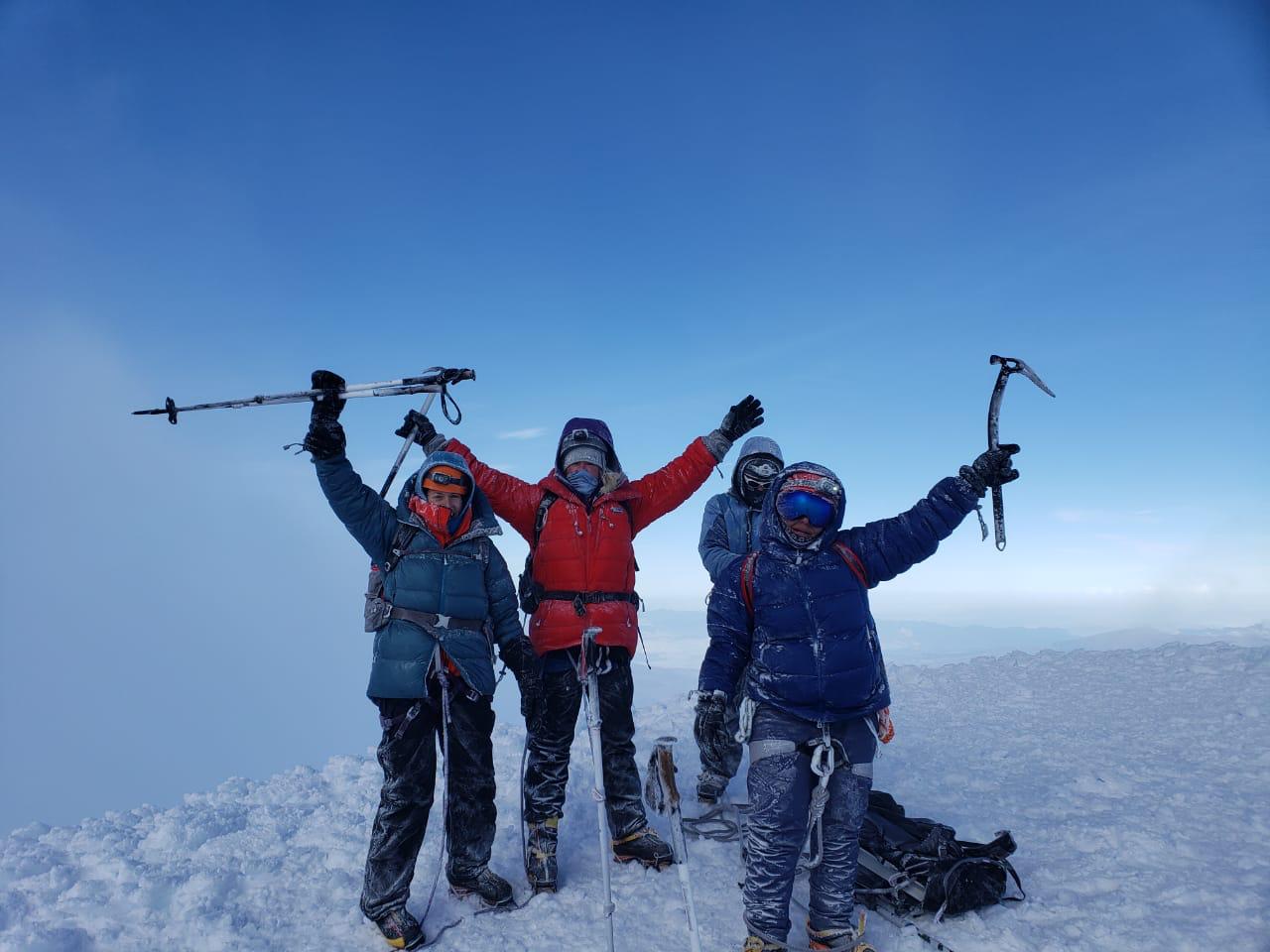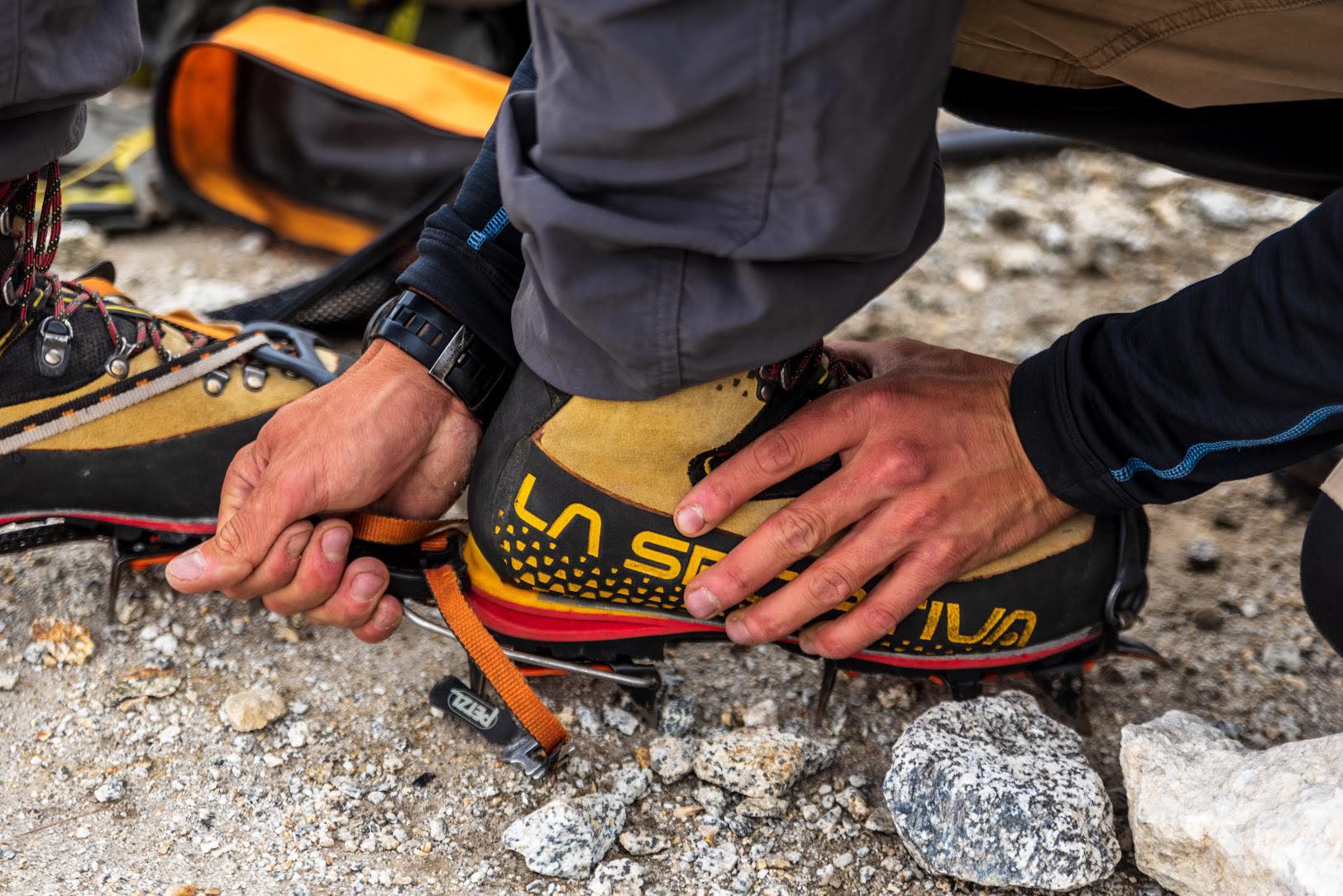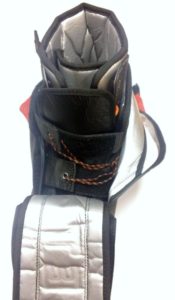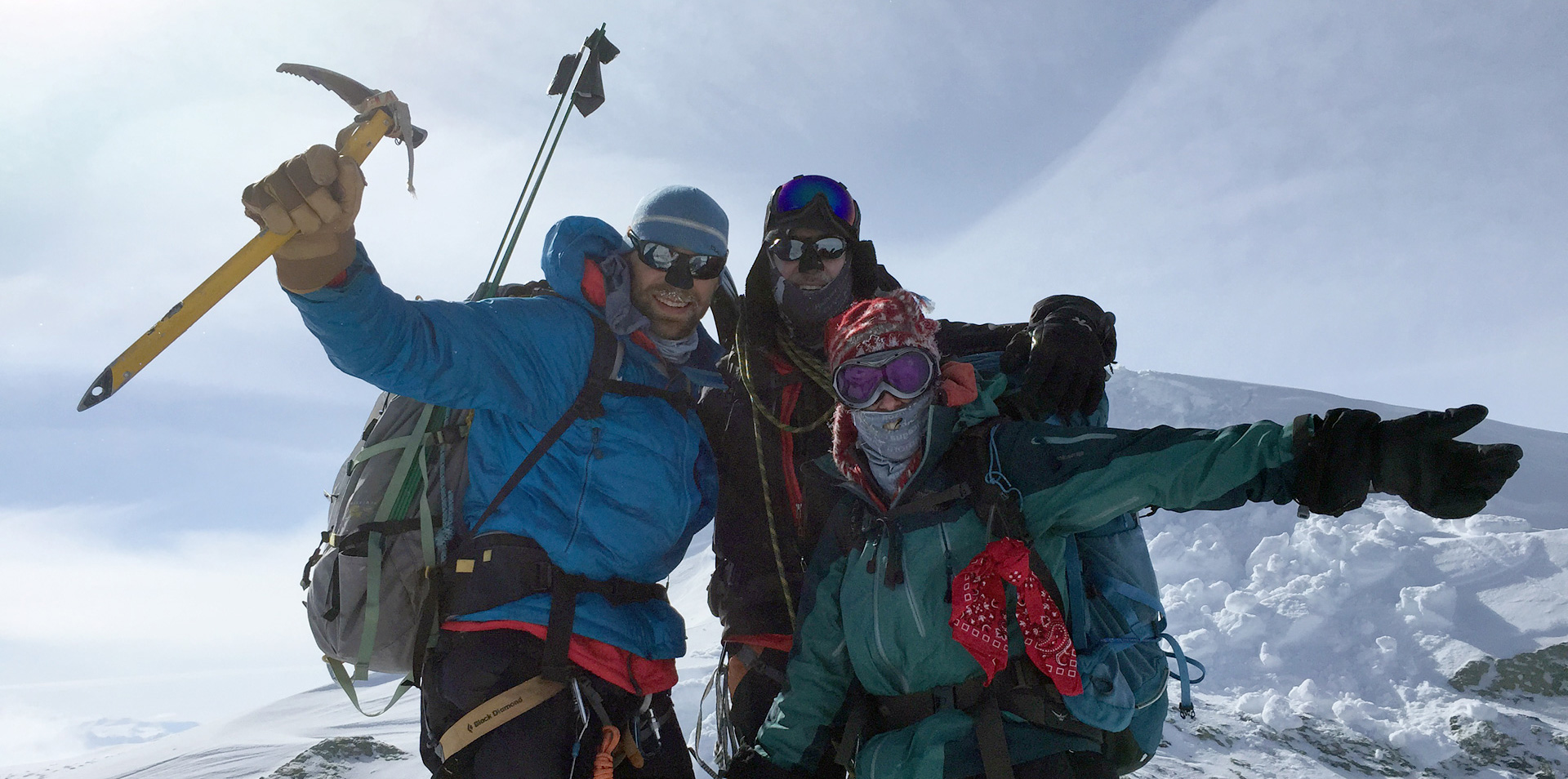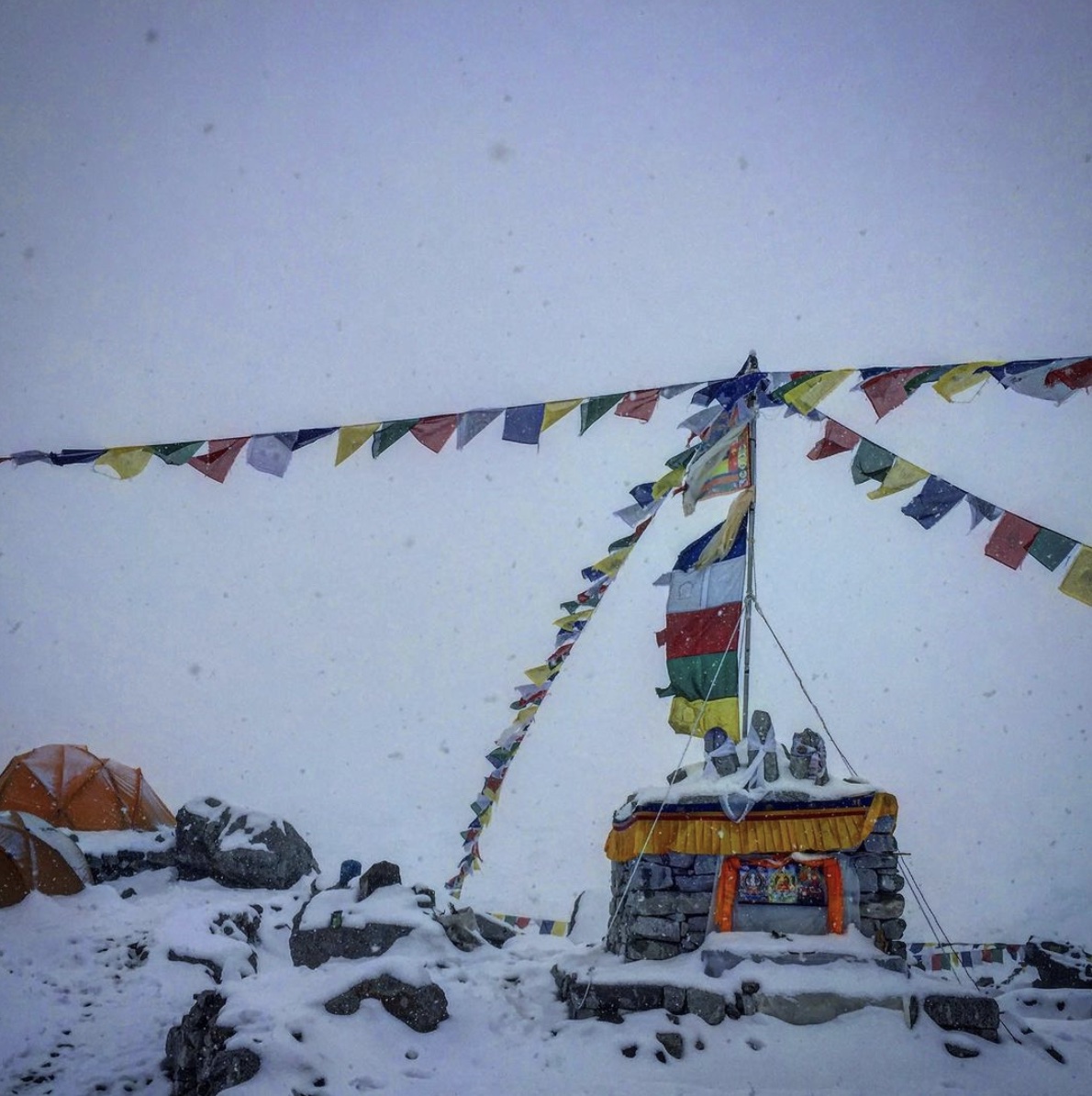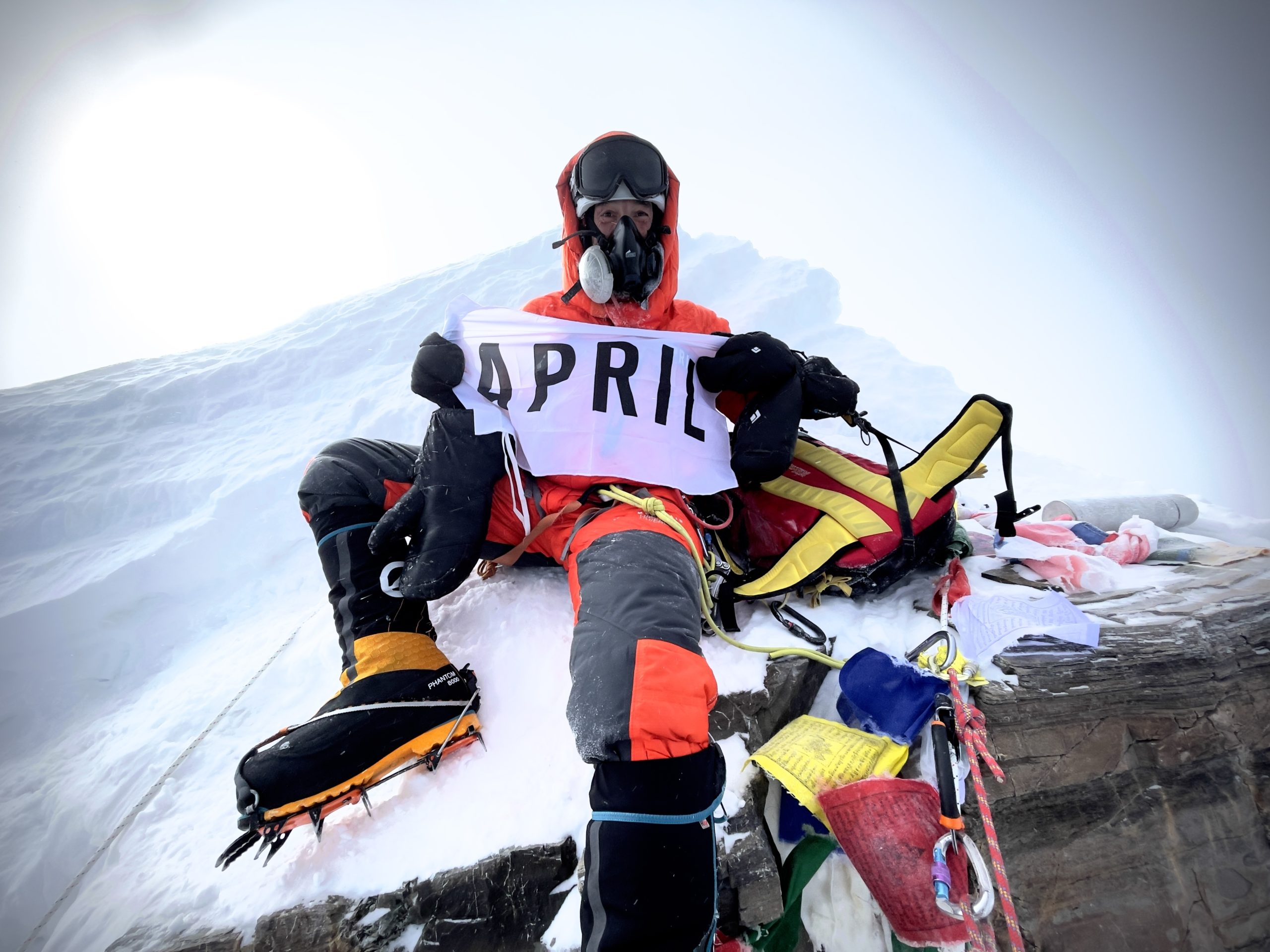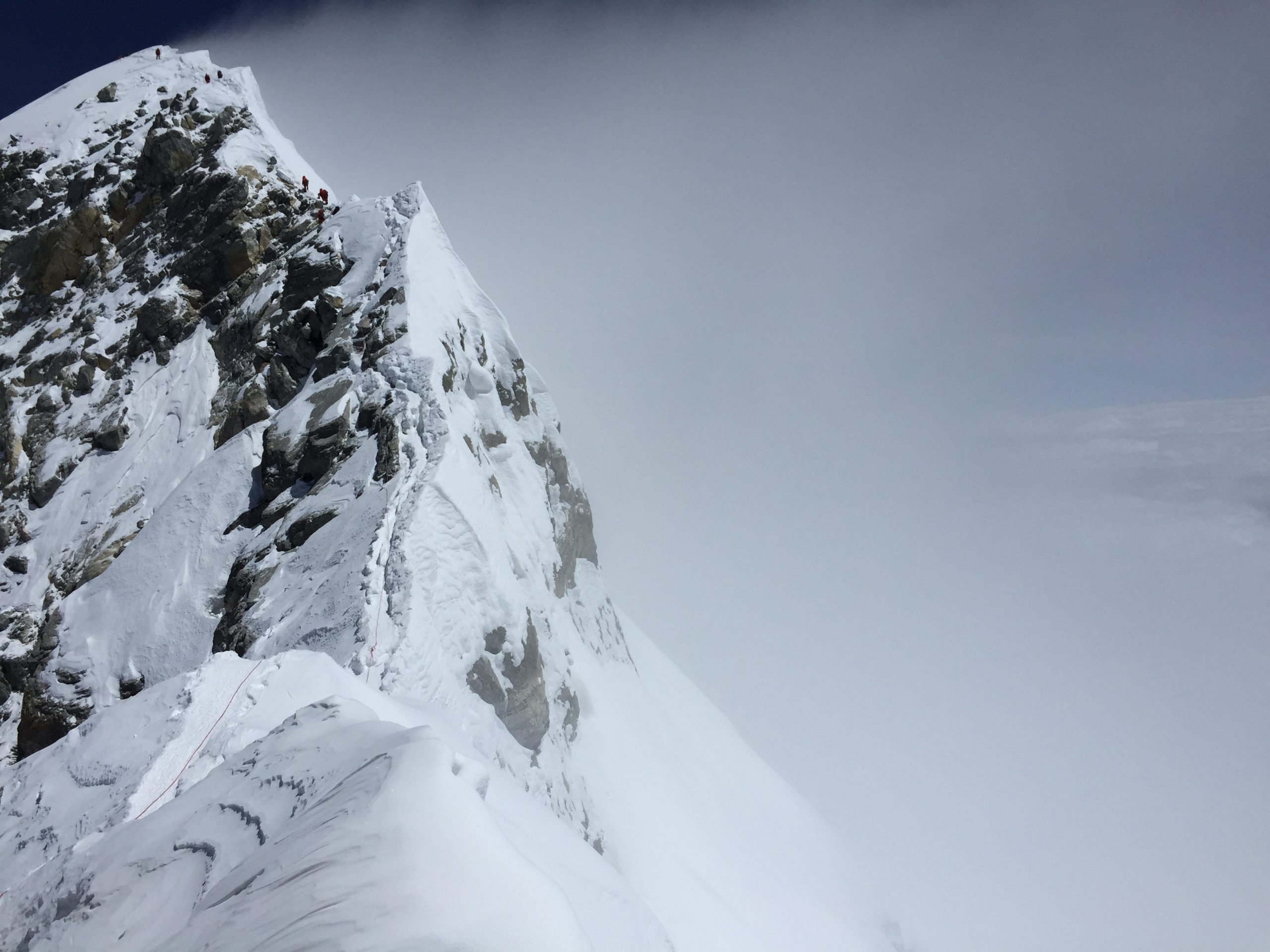...Manaslu Team Arrives in Kathmandu...
The fall climbing season in Nepal has arrived with our Manaslu team flying into Kathmandu over the past few days. Lead Guide Tendi Sherpa reports
All team CTSS Manaslu-2021 are safely arrived in Kathmandu today and we went through the gear check and the climbing briefing. Despite the jet lag all members are super motivated for the expedition and so are the Nepali staffs and guides.
We will be in Kathmandu for next few days and then will be trekking towards the Mount Manaslu base camp via Larke Pass, 5200m.
All our staffs have completed their last packing and they will leave soon to the base camp to starting setting up camps before the members reach there.
Best of luck to the team as they settle in and finish the last preparations before their climb!
Cheers,
CTSS Team
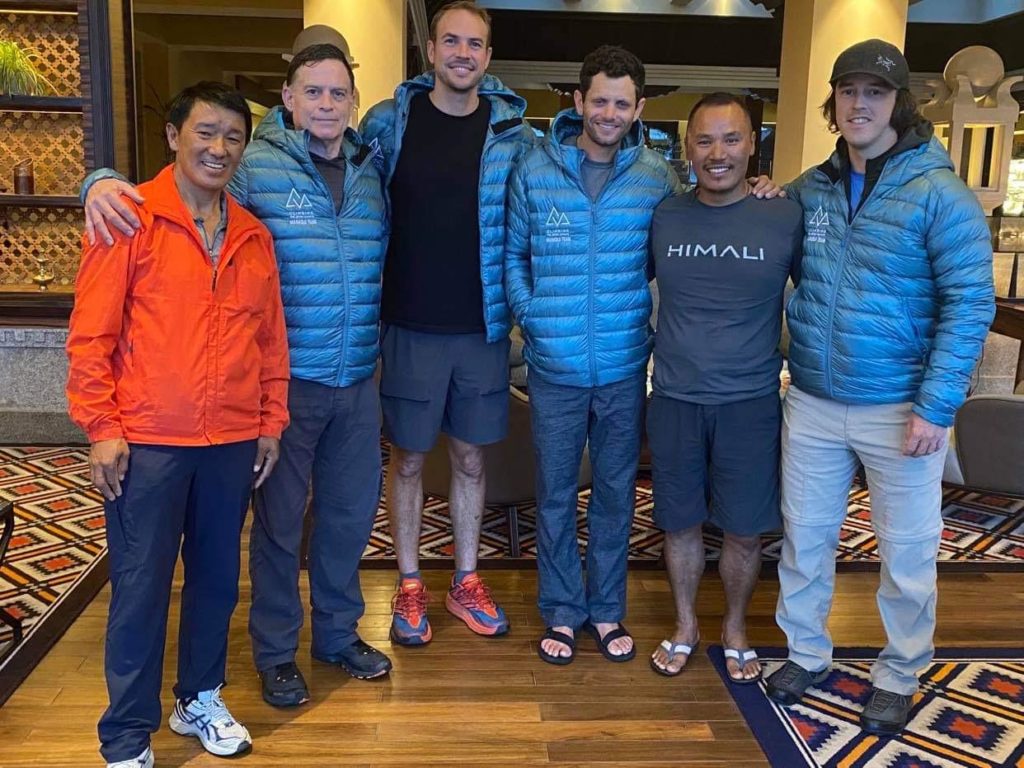
...Summits and Smoke on Baker...
Wrapping up an awesome 5 days with a bit of everything, rain, sun & now some smoke from the wildfires as our team finishes their successful 5 Day Alpine Academy with us.
Late in the season the route was challenging with more crevasse crossings and end runs than usual. They climbed Roman headwall well with two pieces of running pro and some scree walking at the top.
Everyone did really well with 100% on top!
After the summit they dropped back, had an early night and this morning did a small bit of final training before packing down camp and heading back to the trailhead just as the smoke was settling in.
Thanks everyone for a great season on Baker!
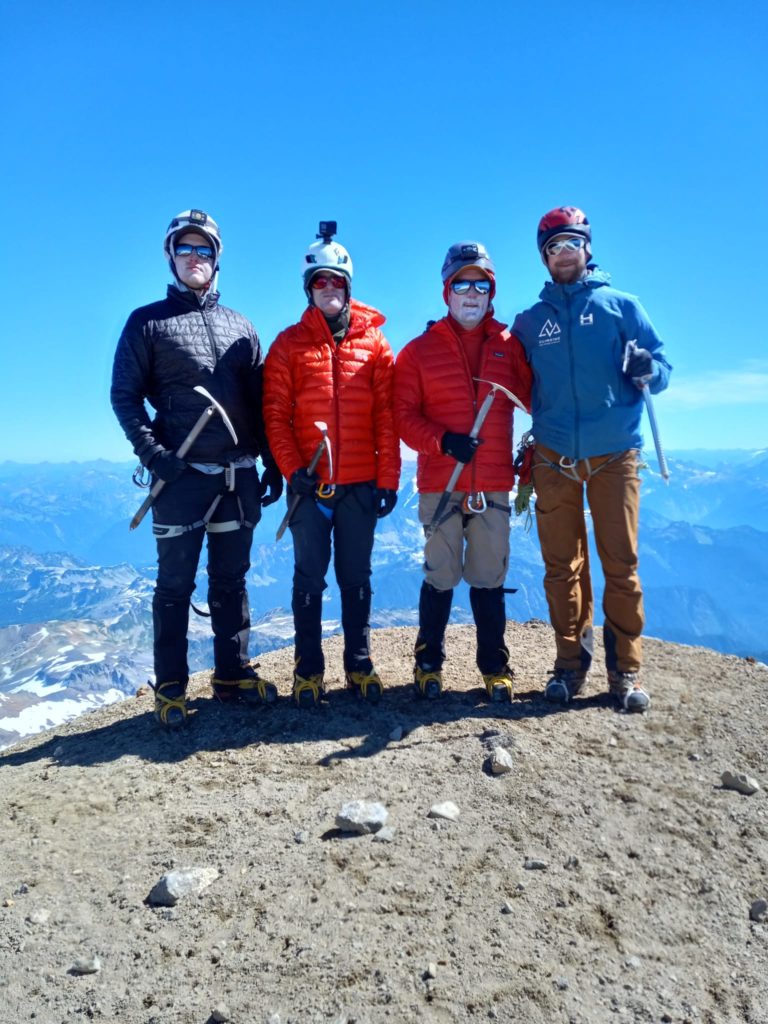
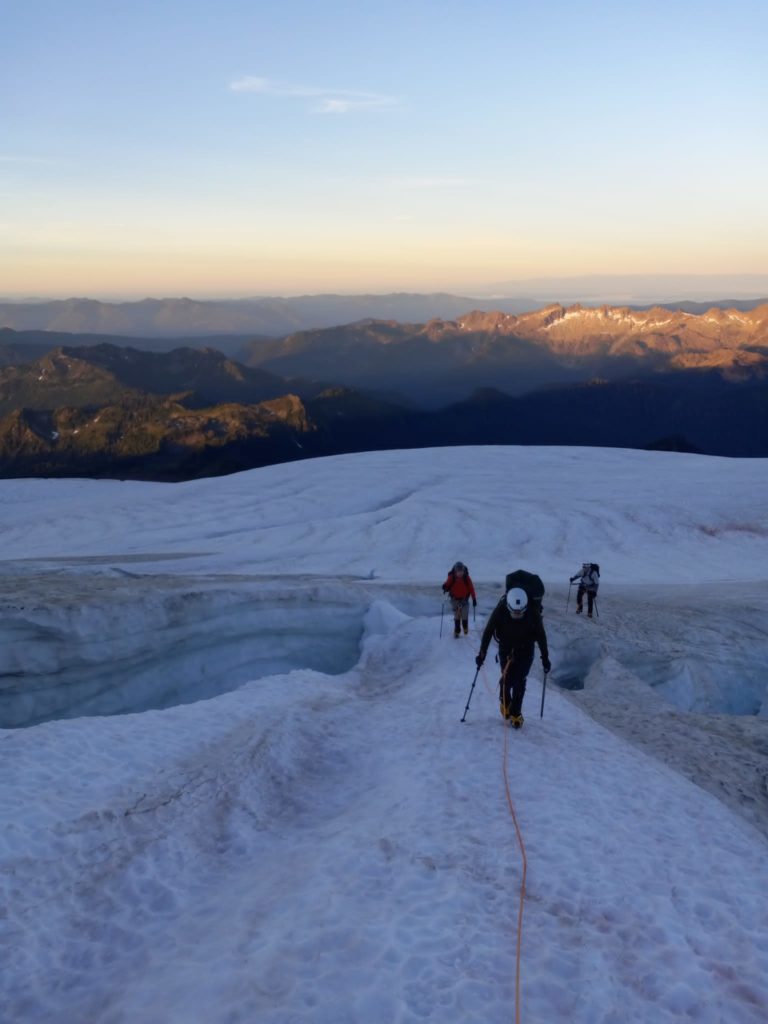

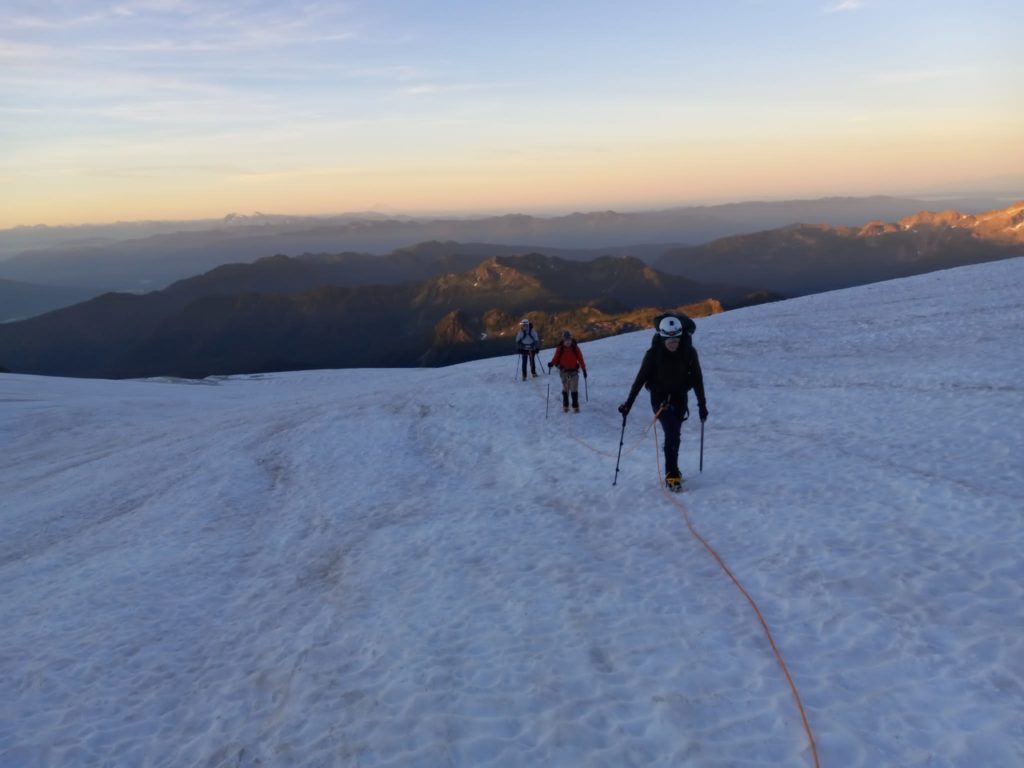
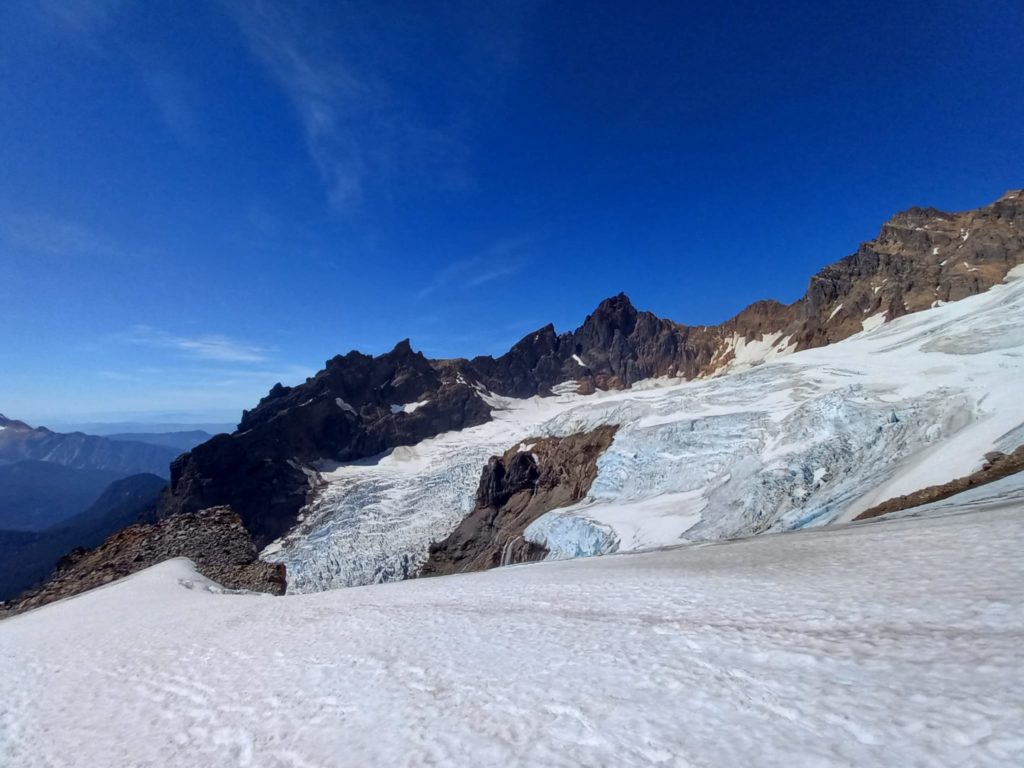

...Blue Skies on Baker...
Sunny and warm for our Baker team today. They took a walk towards the Squak Glacier and spent the day training anchors, crevasse rescue and fixed line ascent and descent.
Tomorrow is summit day, an alpine start - waking up at 2am, climbing through the night, summiting in the early morning and due back in camp early afternoon.
Team is strong and route looking good.
Cheers
CTSS TEAM
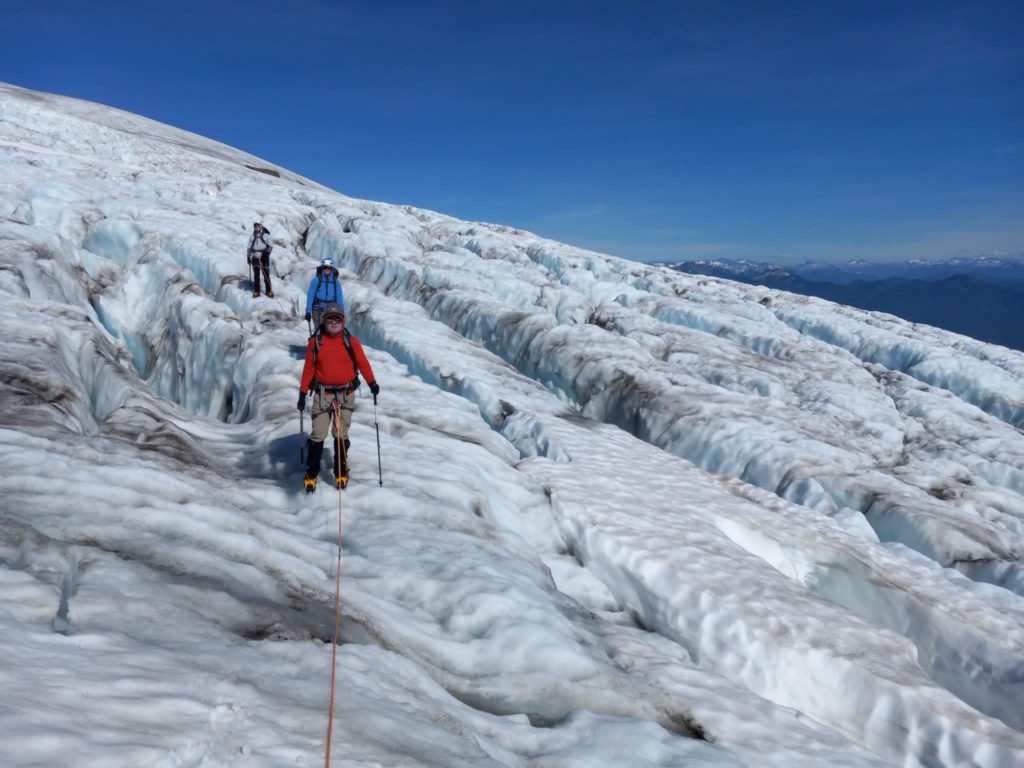

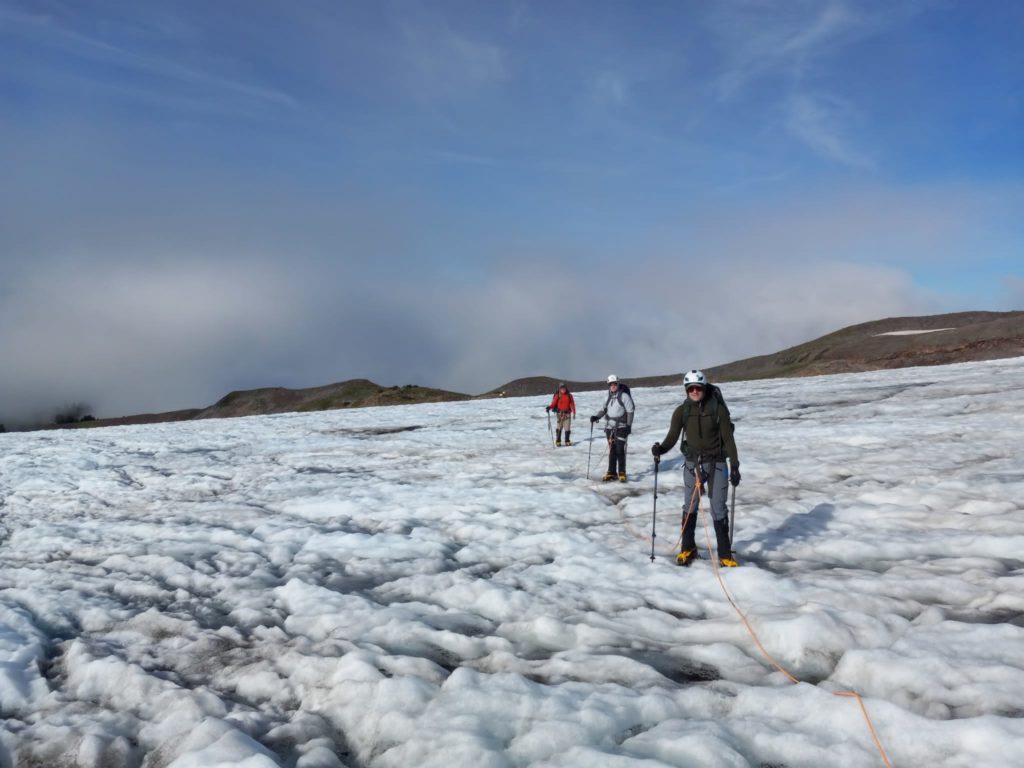
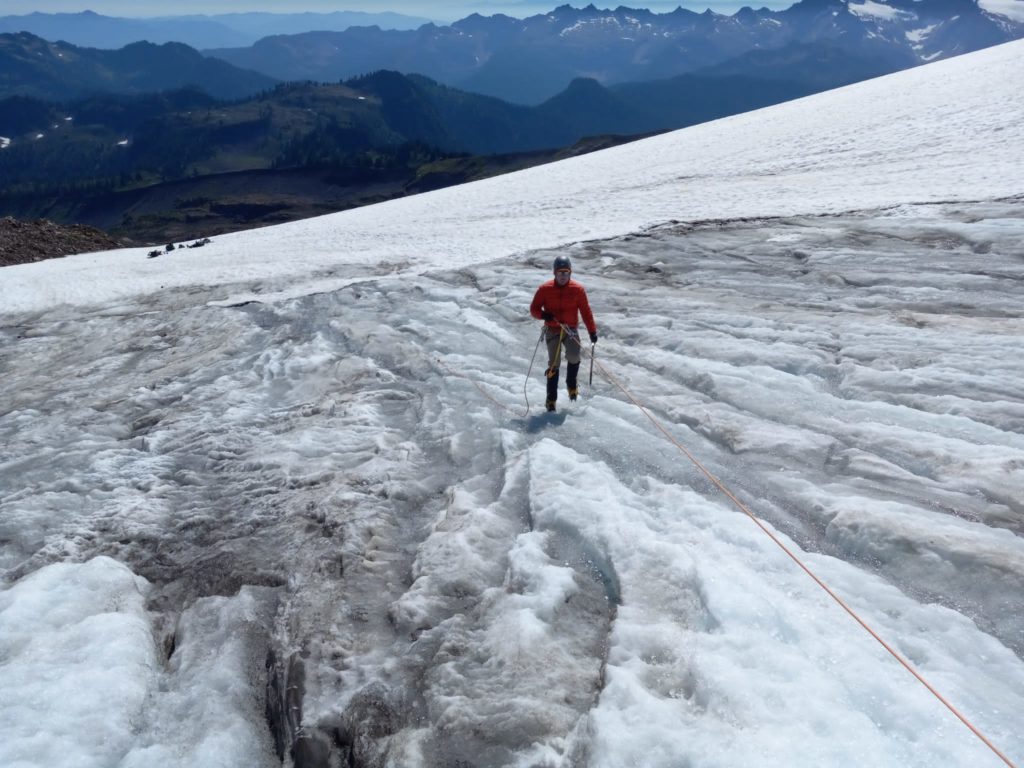

...Baker in the Clouds...
Our Baker team are well underway.
Yesterday they climbed from the trailhead at Schreiber's Meadow up to High Camp which is approximately 5,500ft on the edge of the Easton Glacier. They had consistent light rain the whole way and rolled into camp in 3.5 hours before doing a workshop on knots and getting an early night.
The weather cleared as per the forecast overnight and looks much better for the rest of the week. Still lots of cloud but patches of blue sky.
Today they spent a full day training and mastering new skills, hitting efficient cramponing, ice axe arrest, rope travel, running belay, knots and hitches and each team member finished by setting up a 3 person glacier rope team start to finish.
Tomorrow they'll head out across the Easton Glacier for a glacier walk and then train crevasse rescue and climbing fixed lines.
A big shout out and congratulations to Larry who summited Baker with Robert last week too!
Cheers
CTSS Team
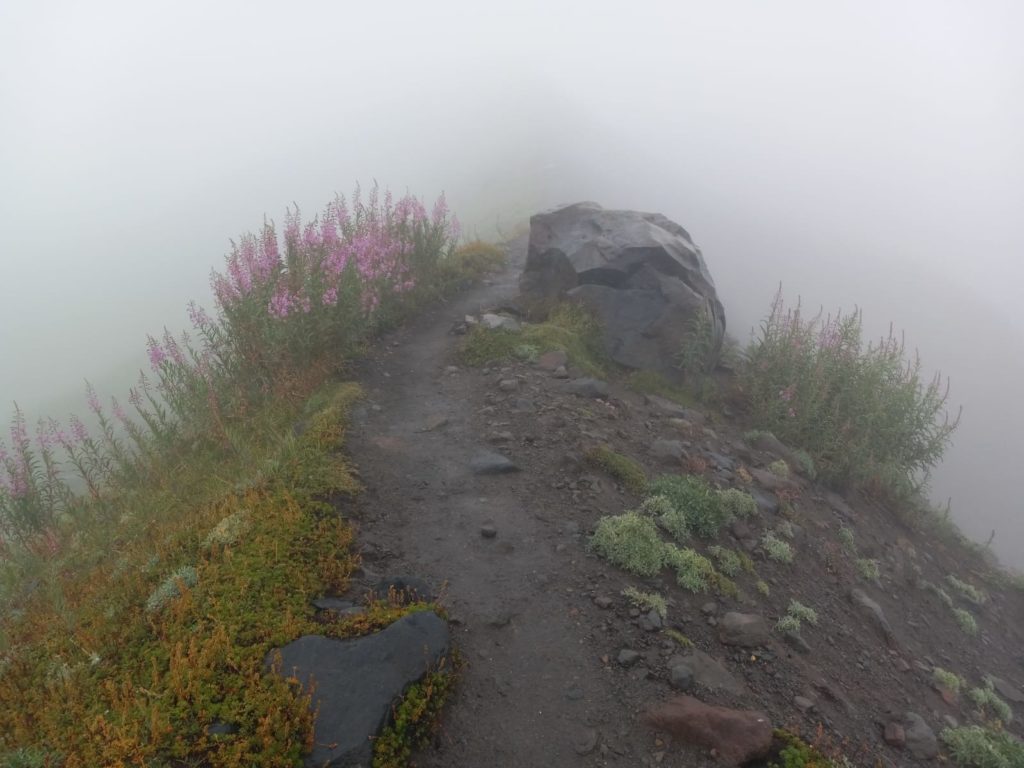
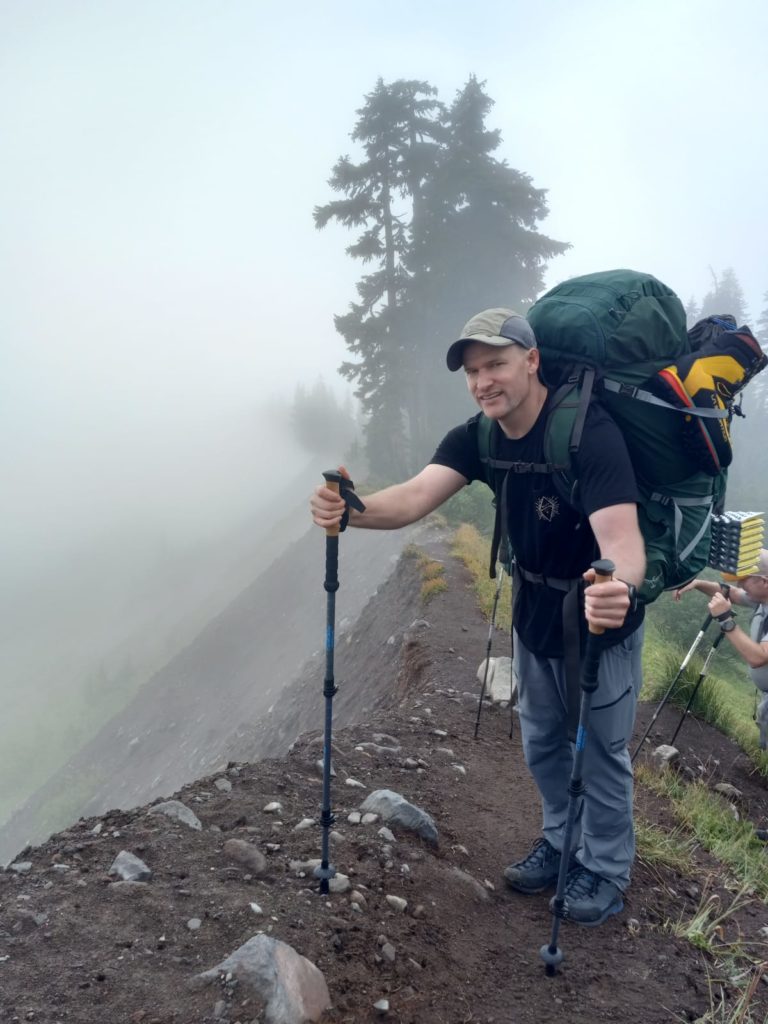
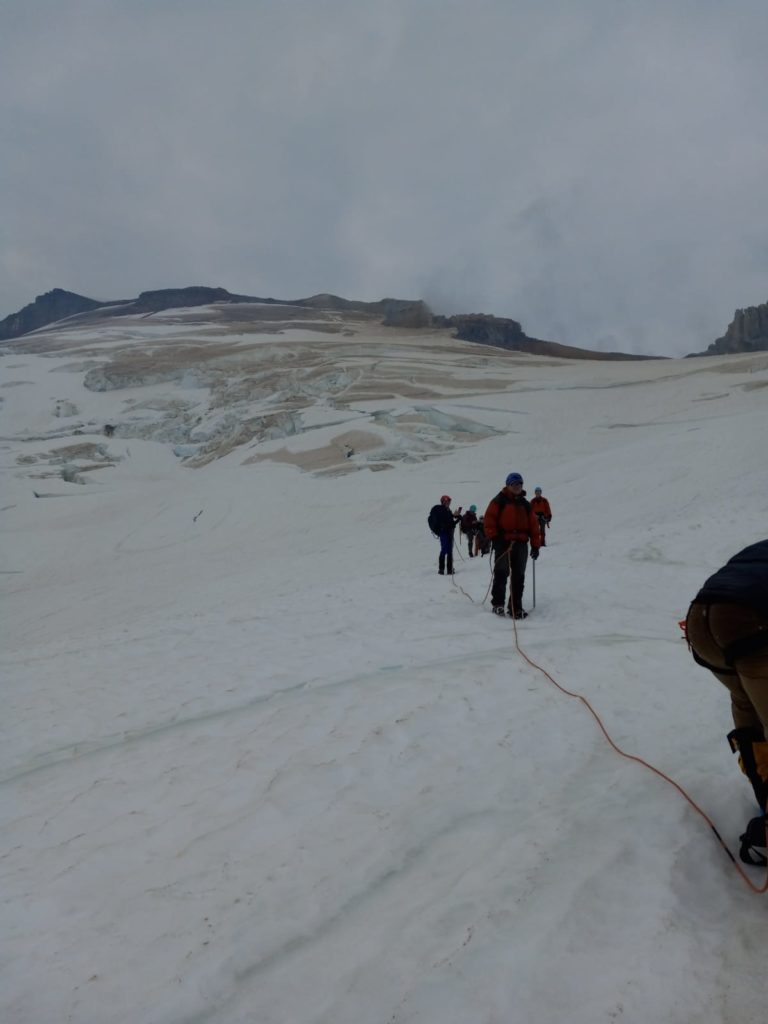
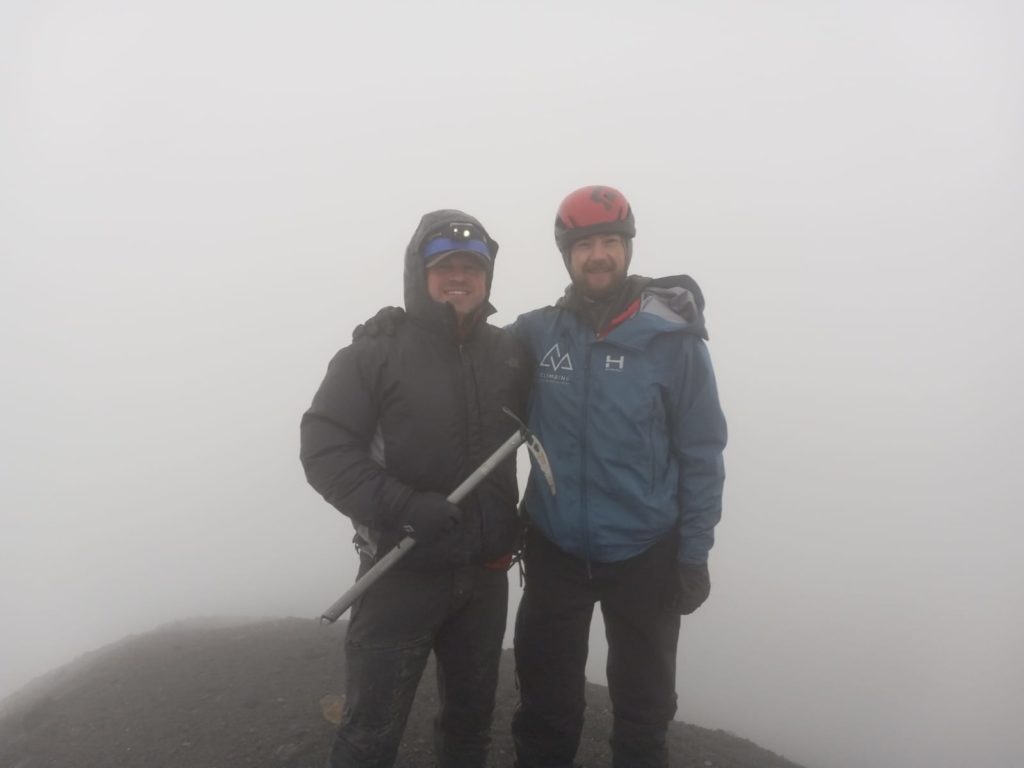
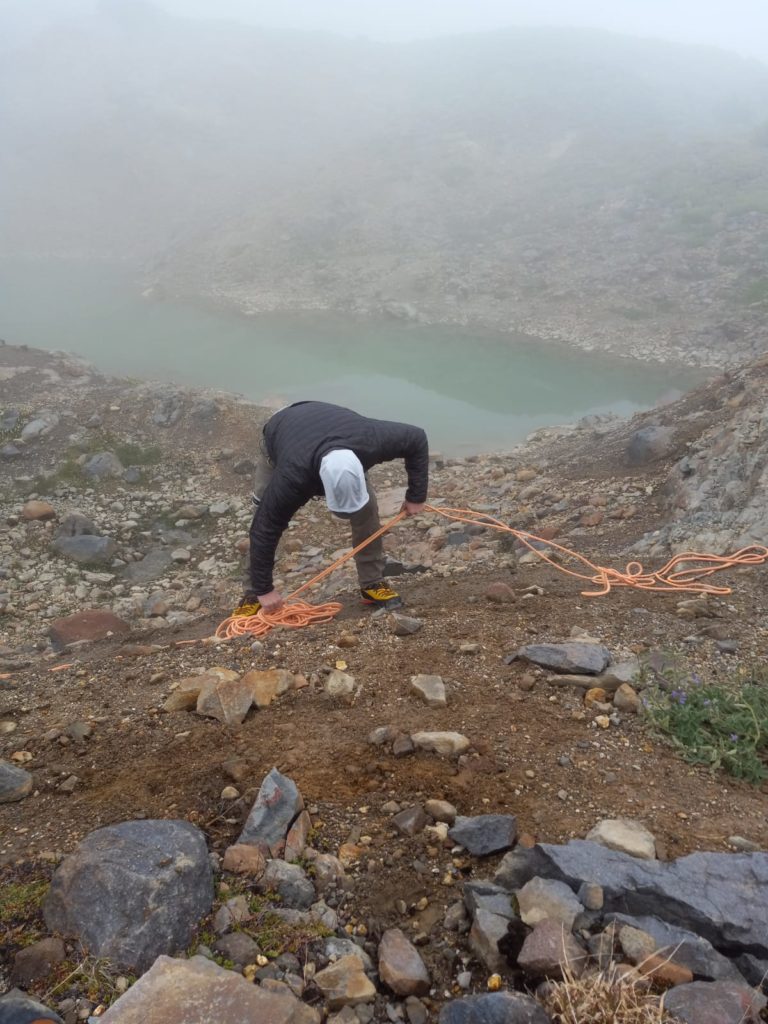
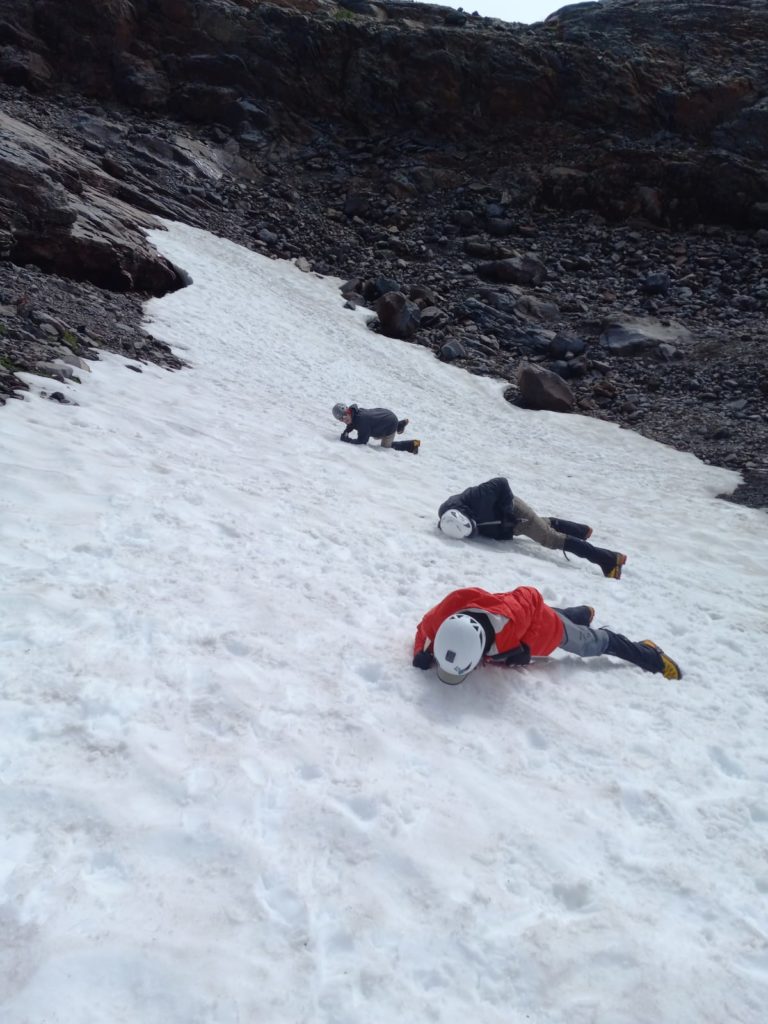
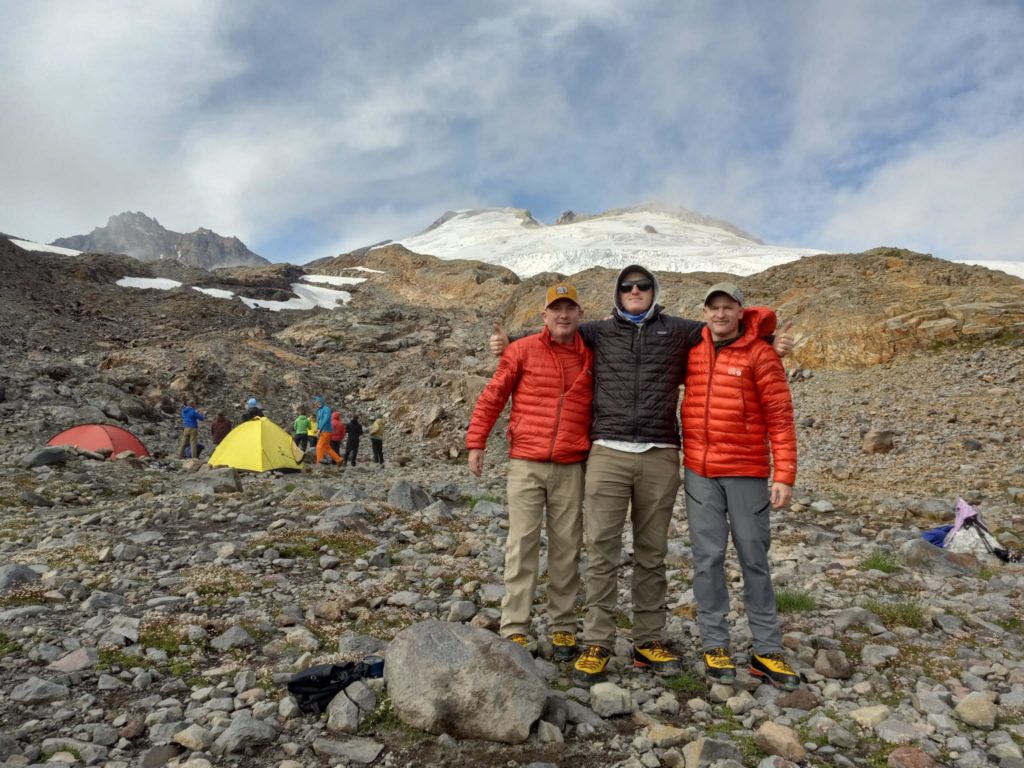
A Mountain Guide's Gear Tips
A Mountain Guide's Gear Tips - CTSS Guide Robert Jantzen
Don't just trust everything you read about mountaineering online! Get a mountain guide's gear tips straight from the source. CTSS Guide Robert Jantzen offers up his best advice for your next trek into the mountains.
Shin-Bang & How to Prevent It
Shin-bang is a bone bruise that forms on the front of your tibia, or shin, from repeatedly impacting the front of your climbing boot as you walk. Unlike blisters, which can be dealt with fairly easily, shin-bang is much harder to manage once it’s set in therefore, of course, prevention is key!
Shin-bang usually comes from the boot being too restrictive of the natural forward and back movement of your ankle while walking. With that in mind, we have found working with your lacing system to be a very successful solution. If you can find a way to keep the boot lightly tight around your forefoot/mid-foot, but loose around your ankle, shin-bang should be less of an issue.
It may feel odd at first to have such a loose system, but over time you become accustomed to it. This was the solution climbers used to use all the time when plastic boots were the best on the market - times/gear have changed, but the technique still applies!
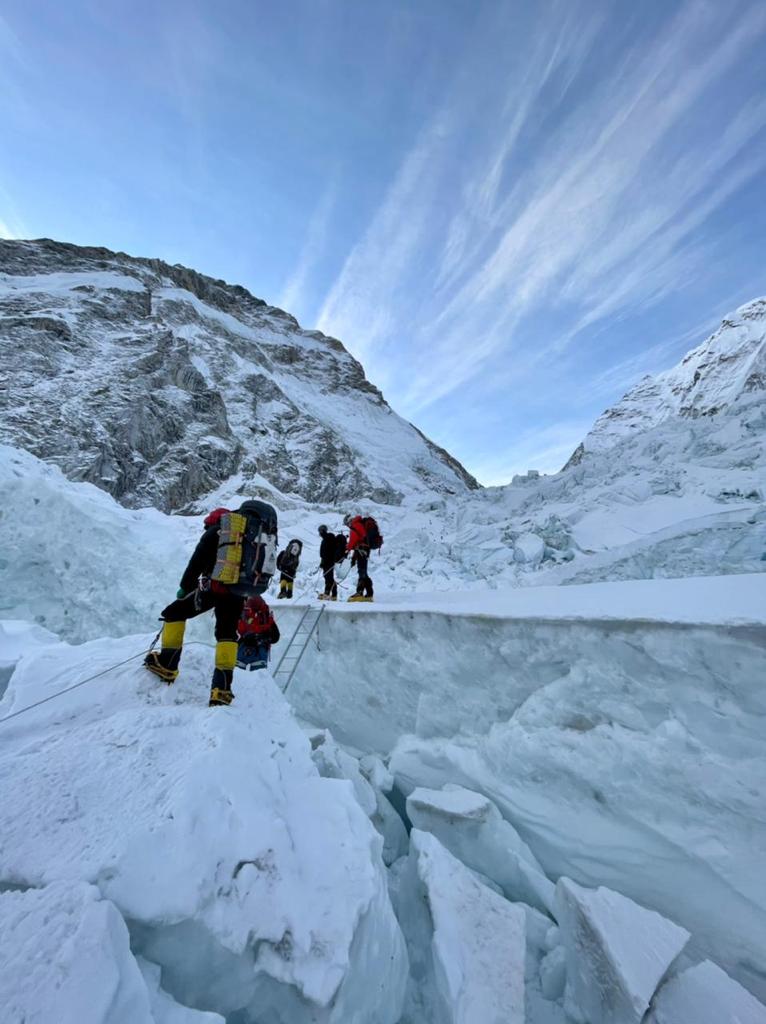
How to Pick the Right Crampons
I need crampons, which one is the right one?
Quite simply, a standard 12 point steel crampon is your best overall bet. This one tool can be used for 90% of mountaineering objectives. We have had excellent success with the Petzl Vasak crampon on expeditions from Mt. Baker to Mt. Everest, and the Black Diamond Sabertooth or Grivel G12 have been very good as well.
We recommend going with a model that has a heel lever and a plastic toe bail for the attachment setup, you may see these referred to as 'semi-automatic' or 'Lever-lock Universal'. If you have large feet (US size 12 and up) you may have to purchase a separate long bar to accommodate your boot. Make sure to test your crampon/boot combination before you leave home. For any crampon, you will need to have a compatible mountaineering boot, but boots are a whole different topic!
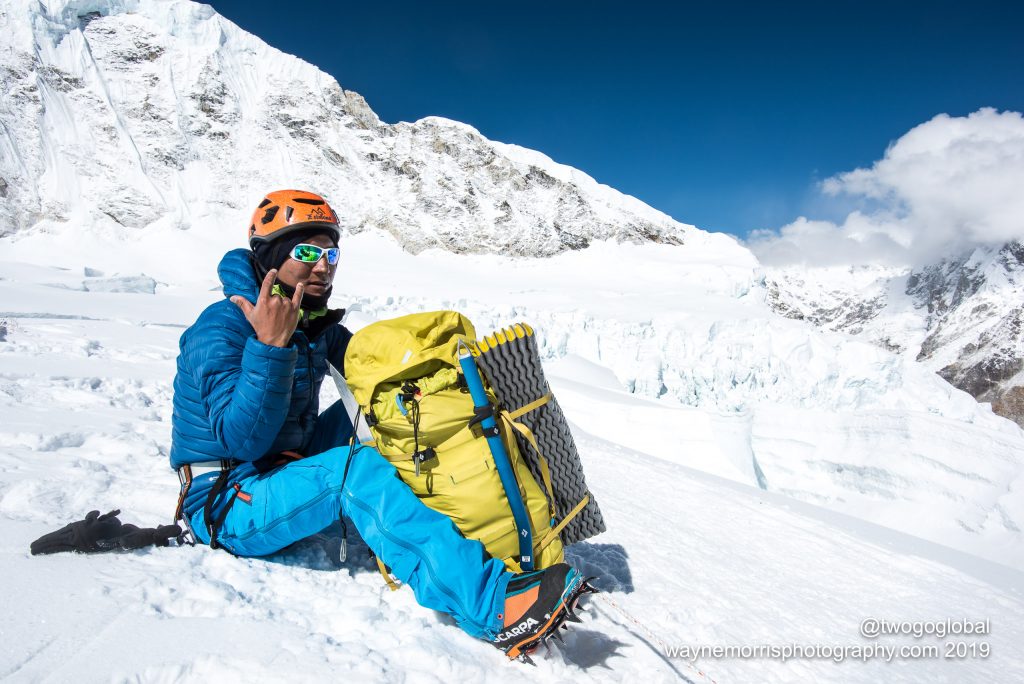
Gear for Mountaineering
Gear is expensive! how do I purchase the right gear to last a long time across all my expeditions? Oh boy, isn’t it though!?
Buying proper mountaineering gear can cost enough to feel like it’s an expedition in its own right. The key to success is having a plan.
Loads of gear is the same for almost every trip - base layers, mid-weight layers, socks, cup-bowl spoon, etc. Cross-reference gear lists from trip to trip and make sure the gear you buy for the “standard” equipment is rock solid and can last you across your entire climbing career. Here are a few tips:
- Make a list of mountains you’re interested in and then start looking through the required gear. Your dream climb calls for a double mountaineering boot, but on your training climb singles would suffice? Buying single boots just for your training climb, may mean you’ll just have to buy the doubles later anyway, so better to buy doubles now that you can use across most of your trips and just use lighter socks - Try to buy forward-looking gear.
- Some items are make-or-break for a climb, research them thoroughly. One properly warm puffy jacket can get you through years of climbing, but buying too light means you’ll just have to buy another as soon as you step up in altitude. Buy quality, you'll actually save $$ in the long run! When it comes to technical gear it is absolutely a case of 'getting what you pay for'.
- Borrow or rent gear as you train to try it out. Most of us have a gear head buddy with more stuff than they could ever use See if you can try items on during training hikes to get a feel for how they fit and work. Similarly, don’t be afraid to use return policies appropriately, even if it’s a hassle. It just isn’t worth missing an important summit because your boots don’t quite fit or your jacket restricts your movement - Test your system before you commit!
- Buy second hand mountaineering gear! After each major expedition season (like June/July for Everest) loads of great gear hits the second hand market as people finish their goal and look to offload. You just need to know where to look, what questions to ask, be prepared to negotiate well and fairly and often pay for international shipping. We've set up a Facebook Group just for this purpose, make sure you join and nab a bargain!
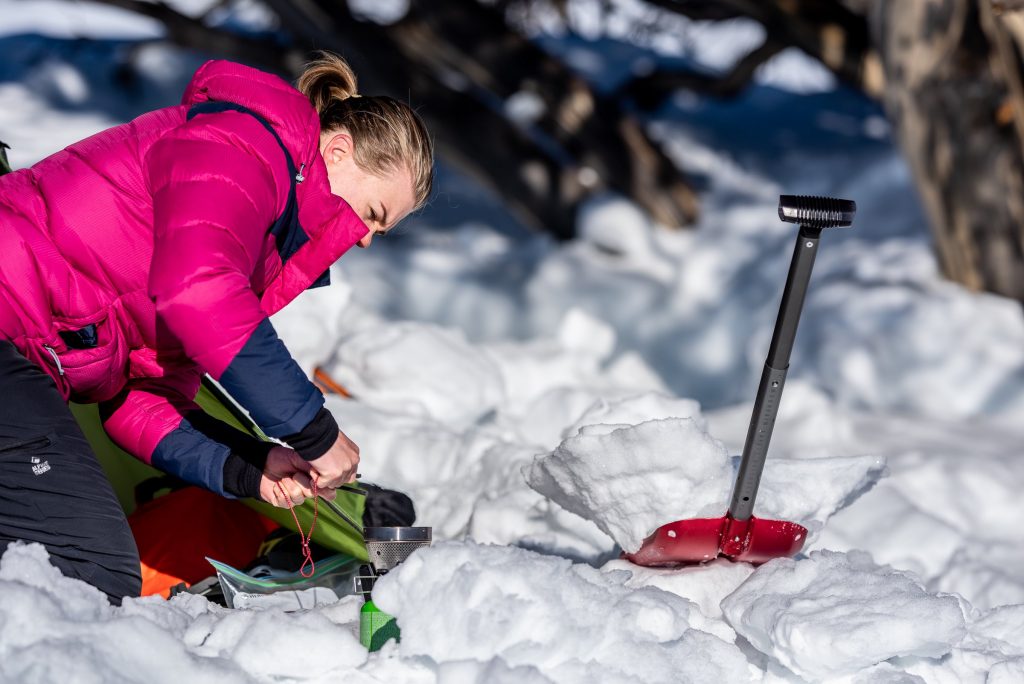
For more tips and resources, visit our website.
How to Choose the Right Mountaineering Boots
How to Choose the Right Mountaineering Boots
Your boots are your all-important connection to the mountain, but finding the right boot is like navigating a broken up glacier! So what boot is actually best? Here's a guide to help choose the right mountaineering boots.
Mountaineering Boot Basics
What differentiates a mountain boot from a hiking boot? What's the difference between single, double and triple boots?
Mountain boots are designed with crampons in mind. That means they have a super stiff sole and at least a heel welt and possibly a toe welt as well.
As you walk your foot and boot flexes - if your boot flexes too much your crampon can pop off, hence mountain boots being exceptionally stiff. Mountain boots also have added insulation for cold environments.
This added insulation is what differentiates single, double, and triple boots.
Single Vs. Double Vs. Triple Mountaineering Boots
It all comes down to having the right mountaineering boots for the right job.
Each type of boot is designed for a certain set of temperatures and circumstances. Understanding these will help you select the right boot for your next climb and appreciate why you may need multiple pairs of boots for a goal like The Seven Summits or progressing up to 8,000m climbs like Manaslu & Everest.
Single Mountaineering Boots
Single boots are lightweight and may, or may not, have a toe welt, but they will always have a heel welt. These are fantastic boots for low elevation and warmer climbs such as Mt. Rainier, Mt. Baker and the Australian Alpine Academy in July and August. However, in the greater ranges they are too light to provide adequate warmth against cold and storms. We find if you are looking at a lifetime of mountaineering they offer limited use.
 Double Mountaineering Boots
Double Mountaineering Boots
Double boots are made up of an outer boot shell and removable inner boot, a construction providing additional warmth for colder weather and moderate to high altitudes. One major benefit of a double boot is that the inner liner can be removed and dried in your sleeping bag. This makes them a great choice for longer trips (even on lower elevation, or warmer climbs). You'll find you use a good pair of double boots for most of your climbs around the world. They quickly take the place of a single boot and are far more versatile.
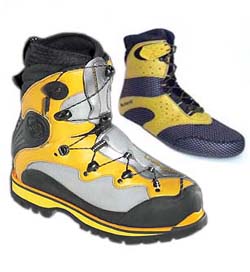
Triple Mountaineering Boots
Made up of a outer insulating gaiter, boot shell, and inner liner, triple boots are ideal for extreme cold (Denali & Vinson) and high altitude climbs (Everest, Manaslu etc) and are critical on those peaks.
Their exceptional warmth will hold frostbite at bay, but make them a poor choice for warmer weather climbs as your feet get too hot and are likely to sweat profusely. Wet feet are going to cause significant discomfort and foot issues during your expedition.
Synthetic or Leather Mountaineering Boots Vs. Plastic Mountaineering Boots
Like all other gear, boots have undergone a rapid evolution over the last 20 years with plastic boots slowly being replaced by synthetic or leather models.
You may still find places recommending plastic double boots and most rental facilities carry this style of climbing boot. These older styles still work well and are extremely durable. However, if you're starting fresh with them and they aren't broken in, they can cause shin-bang and other foot issues due to their extreme rigidity.
If you're purchasing new boots we highly recommend focusing on boots with an outer shell made of synthetics or leather. For personal use their durability is excellent and if treated well and cared for, they will easily last for dozens of major expeditions.
What Brand is Best?
While many climbers have a preferred brand, most mountain boots are made by highly reputable companies like La Sportiva, Scarpa, Millet, and a few others. Quality-wise they're all great and comparable, but differ significantly in fit. We recommend you try on several models from different brands to find a boot that fits your foot well. It doesn't matter how highly rated the boot may be in online reviews; if it doesn't fit your foot, you won't be happy!
Take the time to find a boot in the right class (single, double, or triple) that both fits your expedition goal and your foot. You may find one brand fits best in doubles, but their triple doesn't fit well at all. Experiment and try on several pairs and sizes.
How to Size Your Boots
A good general rule of thumb is to aim for between 1/2 inch (1.5 cm) and 3/4 inch (2 cm) of room between your toe and the end of the boot. Your foot shouldn't feel pinched side to side in any location and when laced you shouldn't have more than just a little heel lift when you walk. Keep in mind - your foot bends even when your boot doesn't, so no matter how good the fit, you can always expect some heel rise as you walk.
Since boots have a reinforced toe, it can be tough to figure out how much room is left in the boot. We recommend sliding your foot all the way forward with the boot unlaced. With your toes touching the front of the boot, slide your hand all the way down the back of your leg, into the the boot and down between your heel and the heel cup of the boot. You should be able to get a finger behind your heel and measure the gap.
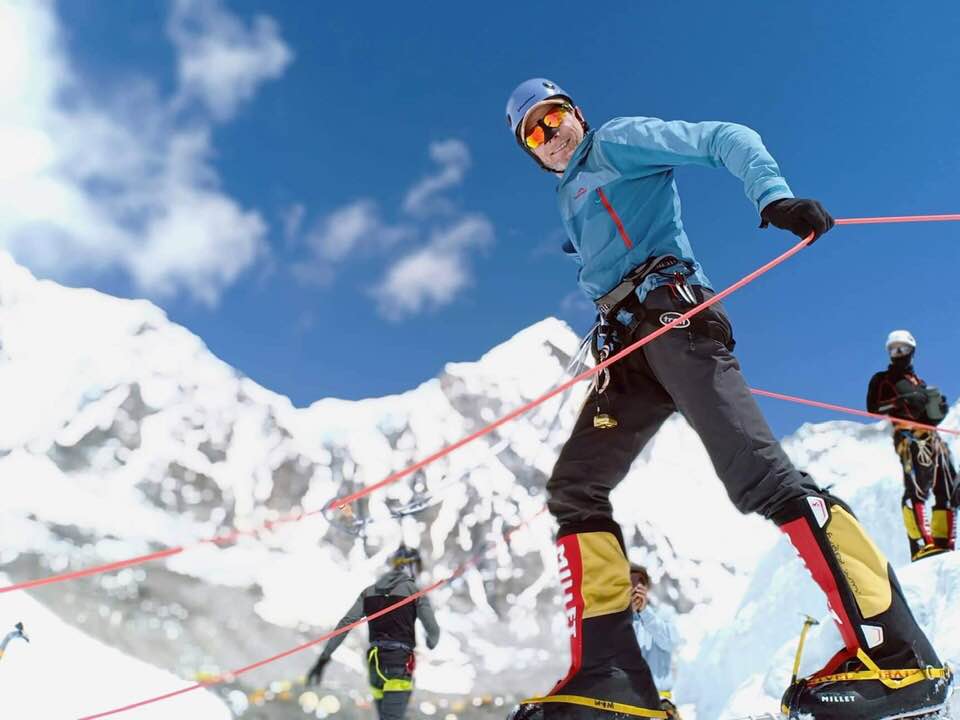
There are some tips on how to choose the right mountaineering boots. We hope this guide helps you gear up for your next expedition! For more climbing resources, visit our website.
How to Size an Ice Axe
How to Size An Ice Axe
Learning how to size an ice axe is crucial to technical mountaineering. If you dig around the Internet looking for ice axe advice an you'll probably find something like:
"When holding the axe by your side the spike should touch your ankle."
Basically, if you're taller - your ice axe should be longer, right?
Well, not quite.
What used to be common advice is now outdated. For example, one of our guides is 6'1" (185cm) and their longest ice axe is 60 cm. His most frequently used ice axe is 56cm, and he even uses a 45cm ice axe for ski objectives. According to the old advice, all of his ice axes are at least 10cm too short!
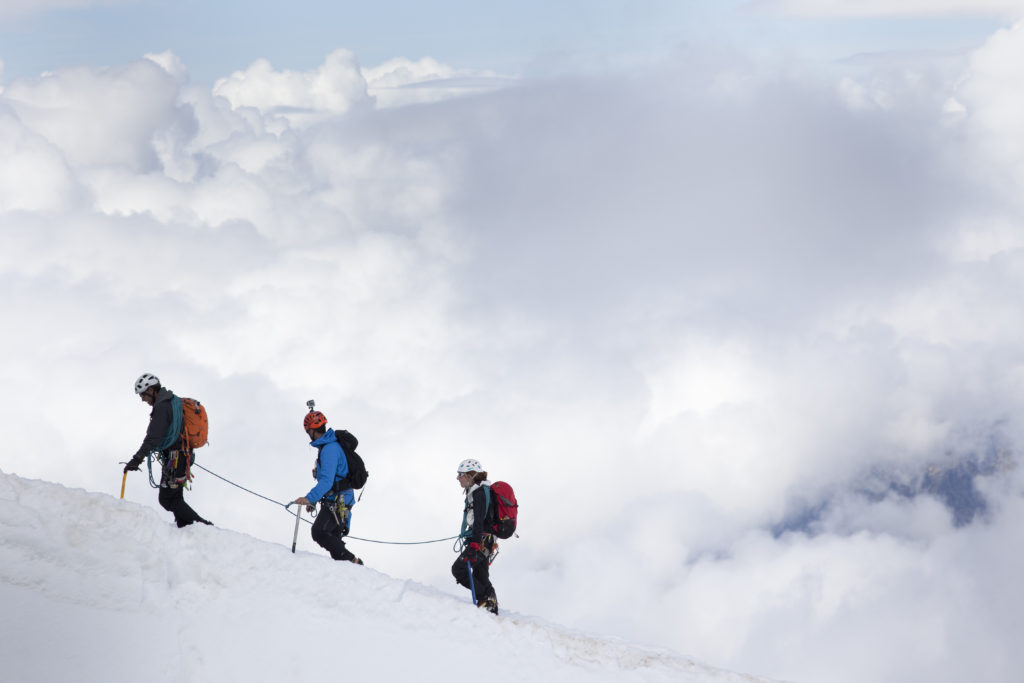
Why keep an ice axe short?
- On steep terrain, a longer ice axe puts the climber's hand up by their shoulder. This isn't a strong position to arrest from, is tiring, and can leave you off balance in terrain where balance = safety.
- Longer axes tempt you to use them as a "3rd leg" like a trekking pole. This may seem advantageous until you encounter snow conditions with a hard crust, but soft snow underneath. In those conditions you can place your axe fine, but as soon as it's weighted for balance the spike will punch through the snow crust and slide in suddenly. Again, not ideal - it's much better to be in balance over your feet, holding your axe above the snow in a proper position.
- The right size axe is the one you're used to. When using your axe as a self arrest tool the most important factor is your familiarity, you should be able to react into arrest position without thinking. So whatever axe length you train with is the right one for you!
Two great ice axes on the market right now are the Petzl Sum'tec and Black Diamond Venom, with an adze rather than a hammer for general mountaineering. Both are designed to work well in low angle glacial terrain, but also perform on steep snow and ice up to about 75 degrees - much more versatile than a standard ice axe.
Whatever axe you choose, make sure to practice your arrest!
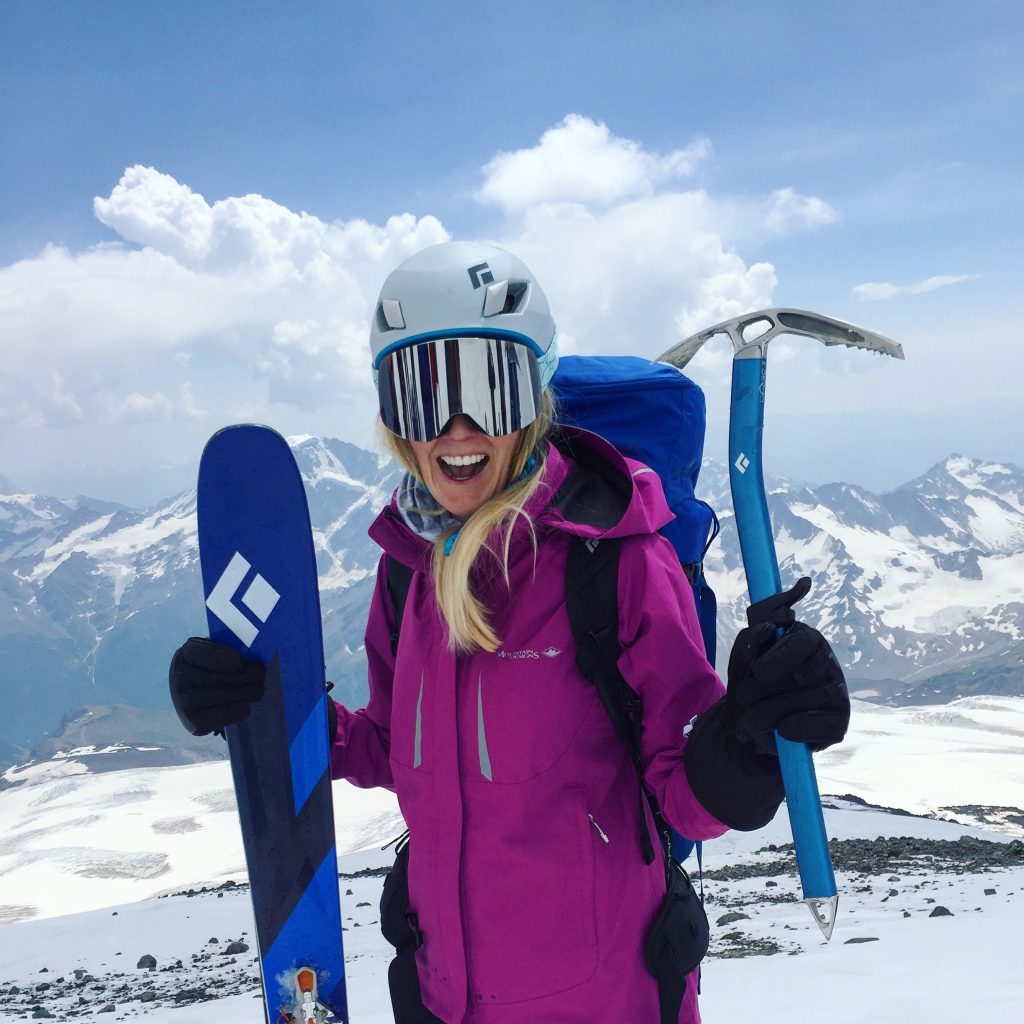
Need to practice your mountaineering skills? Check out our expedition at the Australian Alpine Academy.
...Cyclone Yaas & A Close to our Everest Season...
27th May
Cyclone Yaas has hit Everest, with severe winds and snow. Conditions are due to extend for the next 24 - 48hours as the Cyclone passes to the South & East. The climbing season comes to an official close on the 31st May.
All CTSS climbers and Sherpa are now safely off the mountain.
It brings a turbulent end to a tough season.
Compounded by this weather event, the season completion in just a few short days and the widespread impacts of Covid across the mountain, we made a safety decision to cancel the last summit wave just hours before their bid was due to begin.
Despite healthy and prepared climbers, a number of CTSS Sherpa were unwittingly exposed to Covid-19 at Camp 2 thus compromising the entire team. They were identified as close contacts and isolated with a handful subsequently testing positive, and therefore no longer able to support our climbers.
CTSS has strict margins of safety and redundancy that we operate within. Without a full Sherpa team accompanying our climbers and stationed at the South Col to aid in rescue situations etc, the risk became unacceptable. Further, the effects of becoming symptomatic with covid at extreme altitude can be catastrophic.
As we bring the 2021 season to a close, we are grateful to have had 2x successful summit waves with 25x Everest Summits & 7x Lhotse summits.
Today we bid farewell to Damian, Akash & April who will descend to Lukla over 3 days and the Western Guided Team who will trek down the valley in just 2 days.
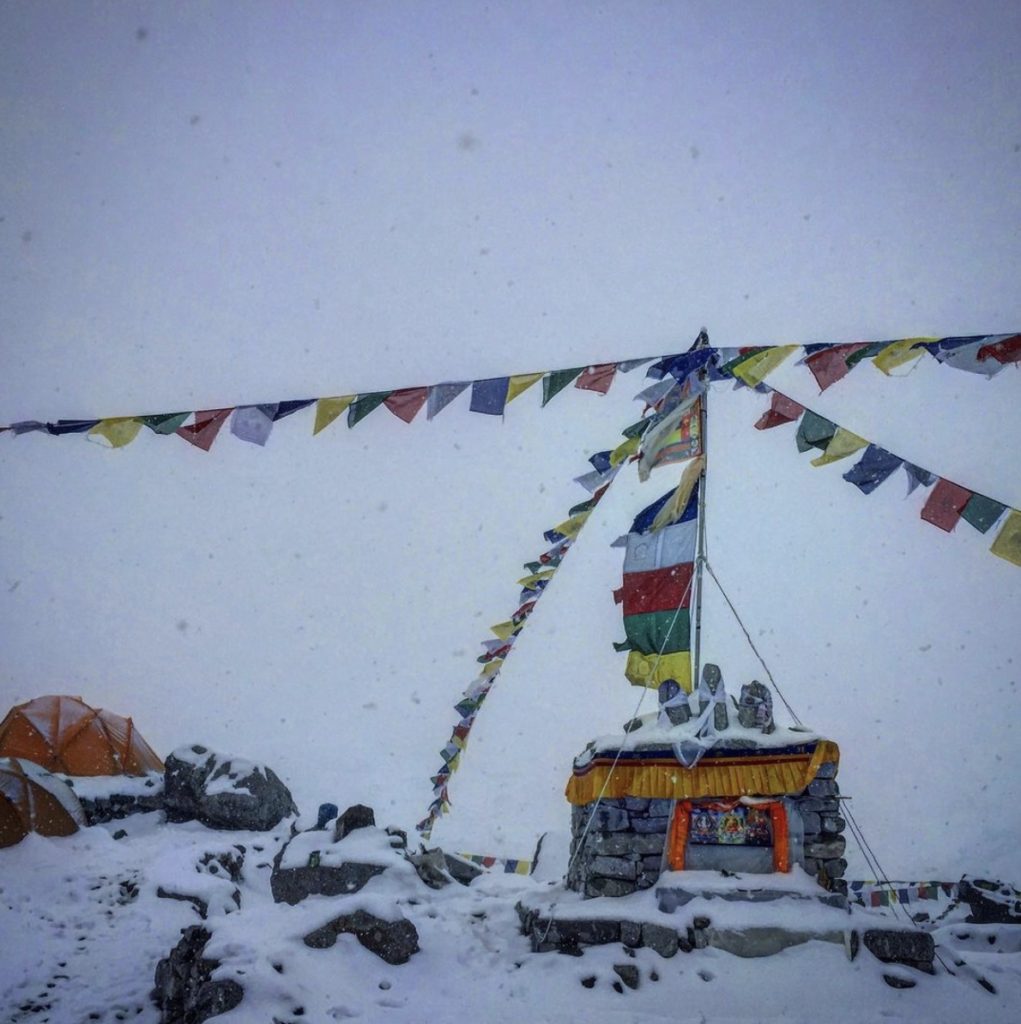
...Record Breaking Double Header Summit...
A hearty congratulations to Francesco Tiribelli & Ang Dawa Sherpa who are currently standing on the summit of Lhotse with Francesco breaking a new record as the 1st Italian ever to achieve the double header. Everest yesterday, Lhotse today!!
All of our climbers from yesterday's summit wave are descending to EBC today or tomorrow.
Cheers
CTSS Team
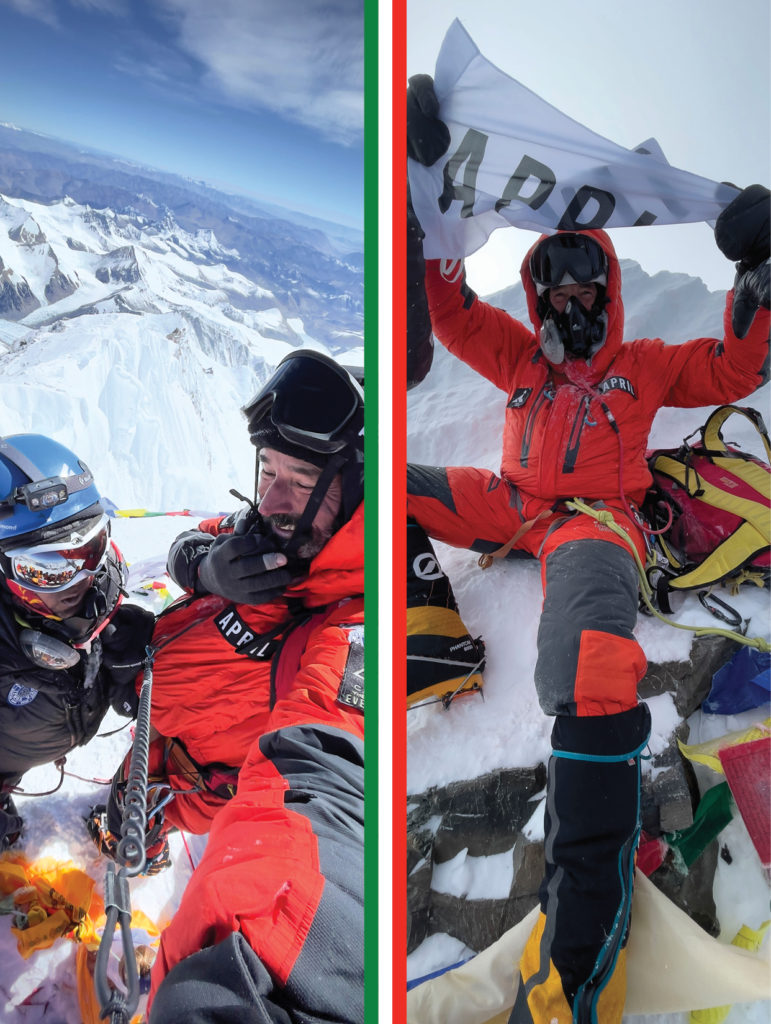
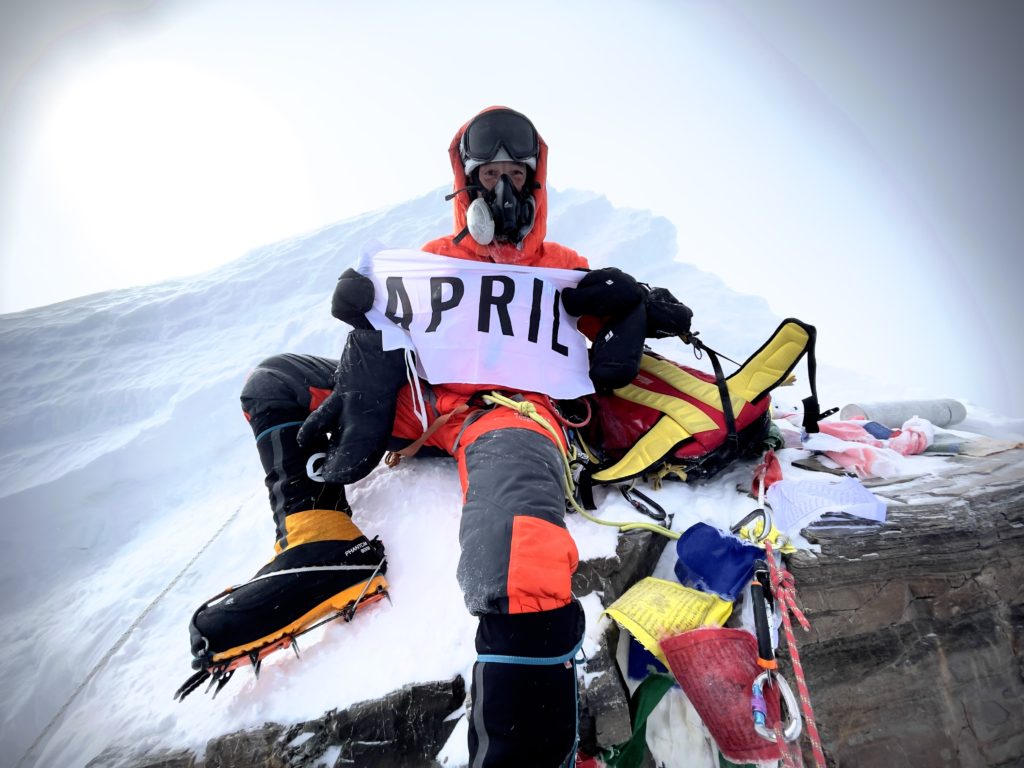
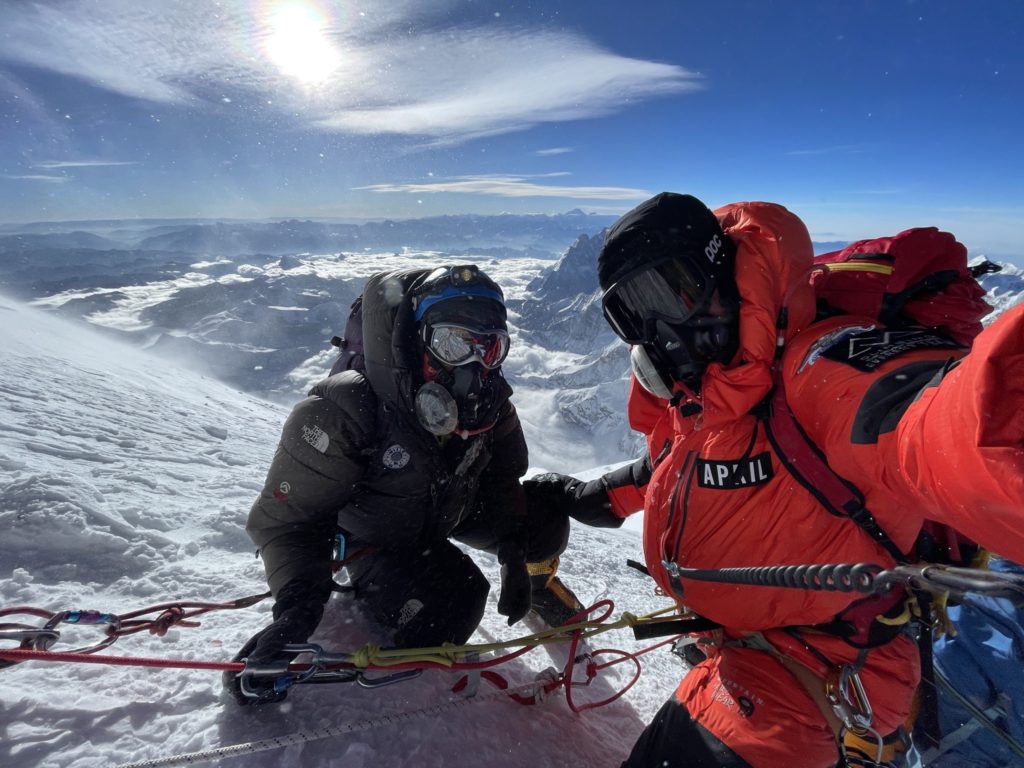
...Lhotse & Everest Summits...
We have the excitement of some summits of both Everest & Lhotse in clear but challenging, windy conditions.
Congratulations to Everest Summiteers
Akash Negi
Mario Celinic
Francesco Tribelli
Tendi Sherpa (Big Tendi)
Ang Dawa Sherpa
Nima Tseri (Phortse)
Sonam Phinjo (Pang)
& Congratulations to our Lhotse Team - 100% on top
with Wolf Riehle
& Francisco Martin
Anup Gurung
Suman Gurung
Lhakpa Tseri (Thame)
They will also now make their way down to High Camp and back to Camp 2.
The rest of the team decided to hold at the Col, making a conservative decision. They are likely to retreat back to Camp 2 today. They include:
Tendi & Asma
Pasang & Remy
Hemanshu
Jessica Han
Vanessa
Malu
Mario F (Ecuador)
Clayton
Guides Tomi & Ossy
Everyone safe & well.
Cheers
CTSS Team
